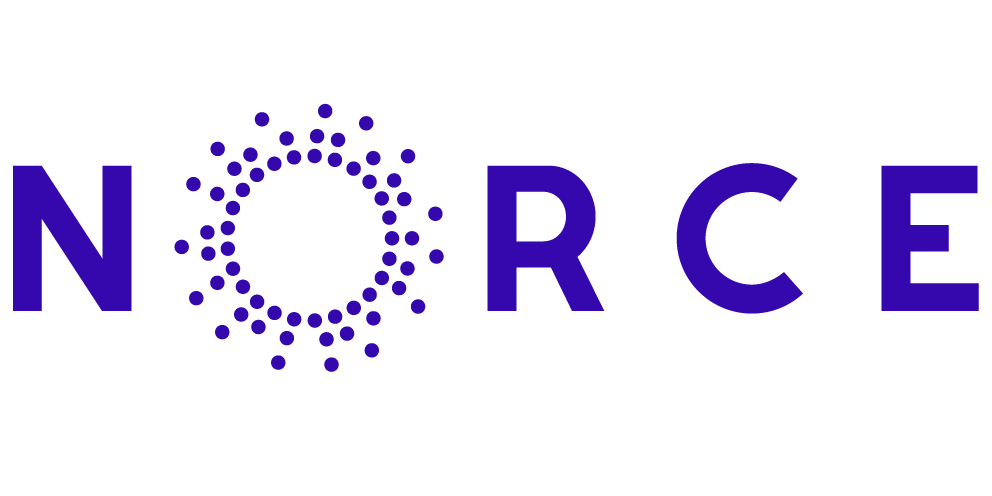MediaFutures Demos
Below you can find a collection of Demos created by researchers at SFI MediaFutures.
- AI Conflict Analysis Tool
- [NEW]
- Large Language Models as Editors
- [NEW]
- Event Extractor
- [NEW]
- Sequential Recommender Systems
- [NEW]
- AIModerator
- [NEW]
- How Headline Styles Can Make You Click on Articles You Disagree With
- [NEW]
- Last Years News
- --
- Re-Ranker v2
- --
- I Dreamt of Something Lost
- --
- Tank Classifier
- --
- Language Checker
- --
- Re-Ranker
- --
- Ballspark
- --
- News Usage
- --
- News in English
- --
- Lørdagsrådet
- --
- Media Forensics
- --
- Debatten
- --
- History Extra Podcast
- --
- Food Recommender Bot
- --
- Gender Guesser
- --
- Visual Feature Recommender
- --
- Vikingane
- --
- Valkyrien
- --
- Exit2
- --
- Svaltards
- --
- Controlling Multi-list Recommendations
- --
- TweetSearcher
- --
- LiveTweets
- --
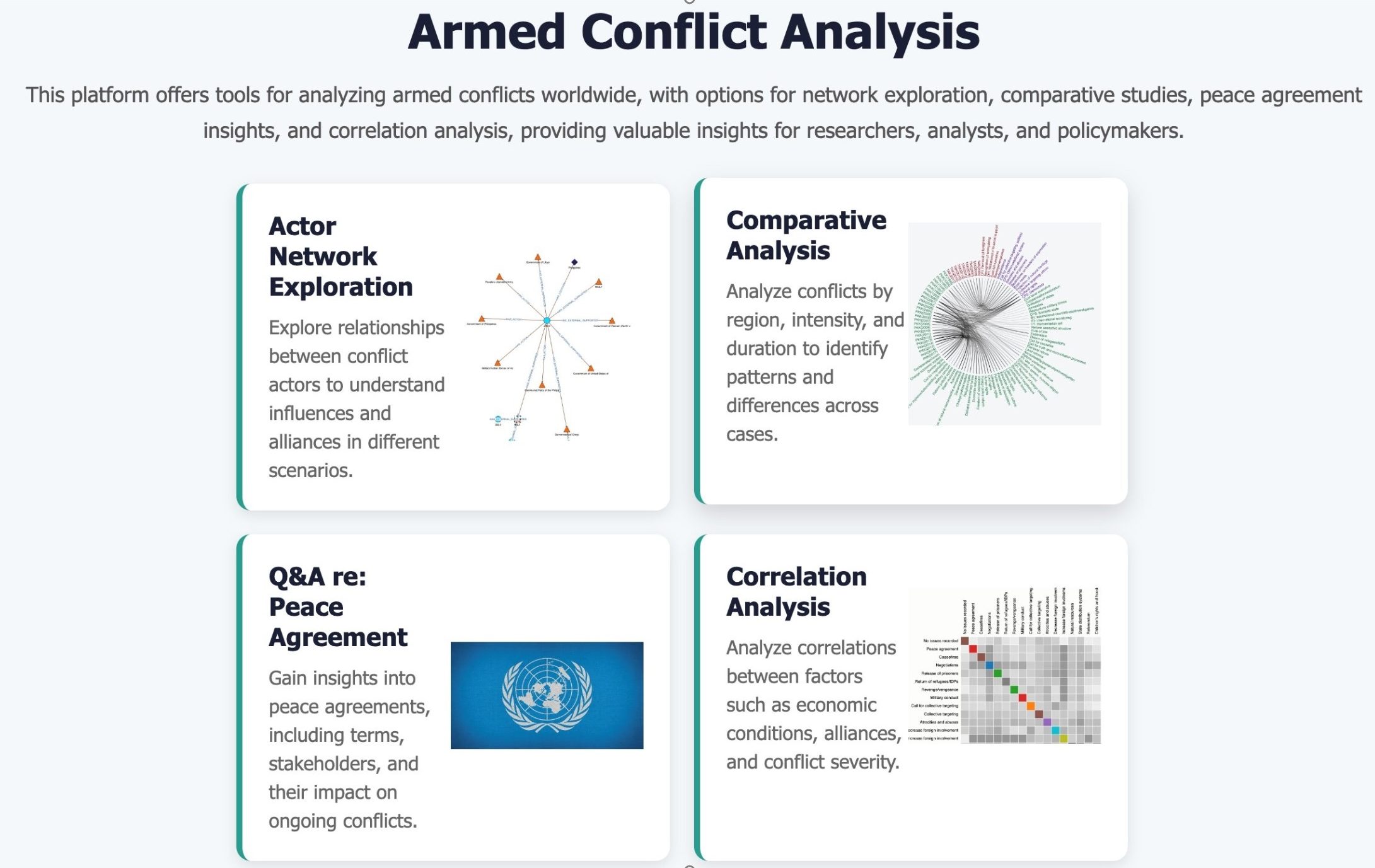
AI Conflict Analysis Tool
Click here for the article about the toolFazle Rabbi developed this conflict analysis tool which models conflicts as dynamic, evolving processes rather than isolated events. Drawing on category theory, graph theory, and Johan Galtung’s Transcend model, the tool visually maps out key elements such as involved parties, causes, escalation stages, and potential resolutions. This structured approach can help journalists, researchers, and policymakers track conflict patterns over time, compare historical and ongoing cases, and explore resolution strategies. By offering a clearer and more systematic understanding of global tensions, the tool addresses the challenge of information overload and supports more effective conflict reporting and decision-making.
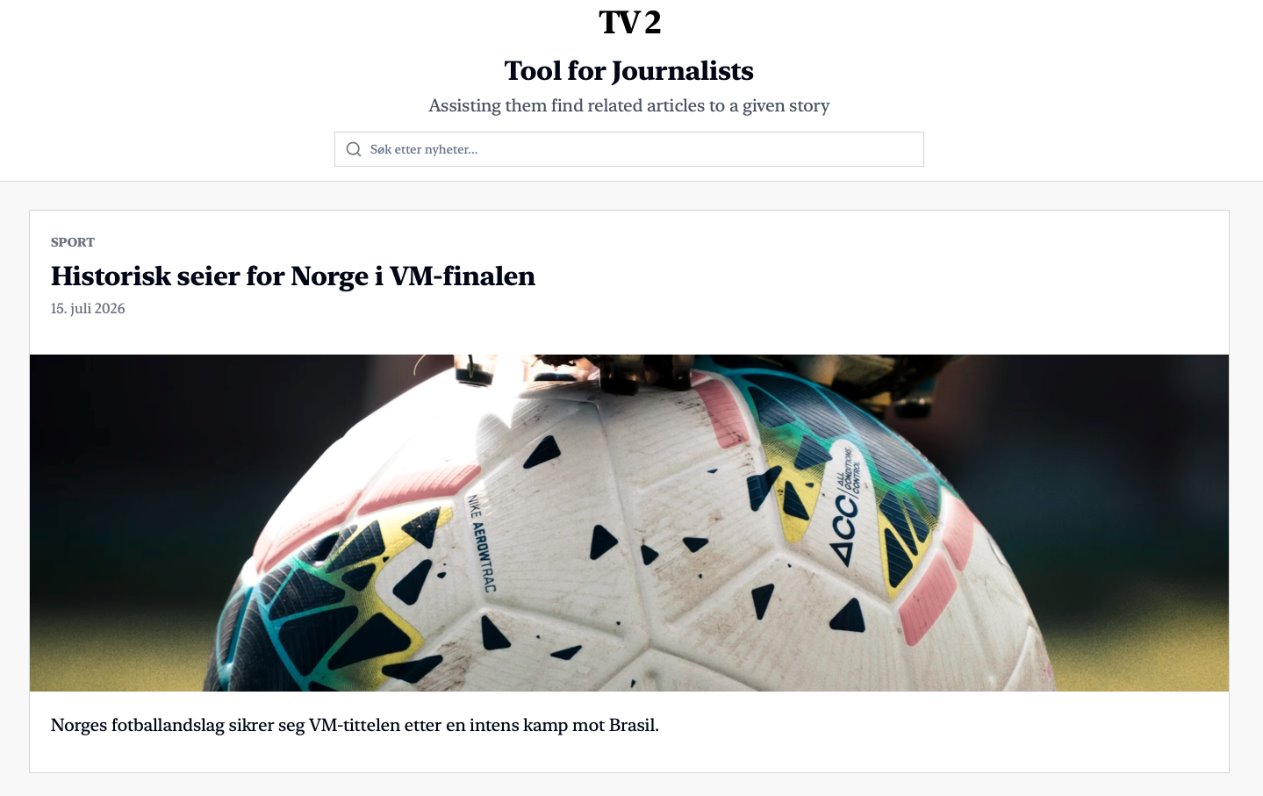
Large Language Models as Editors
This recommendation tool - a project led by PhD candidate Bilal Mahmood - supports journalists at TV 2 by suggesting related articles for a given story. By analyzing content to identify similarities, the tool streamlines the editorial process — enhancing speed and reducing bias in article selection. This demo showcases how AI can assist in uncovering relevant content, helping journalists spend less time searching and more time crafting compelling stories.

Event Extractor
github.com/sfimediafutures/Event-Extractor.gitThe Event Extractor is a natural language processing model designed to accurately identify events and important information from text. It can quickly process articles and extract relevant information, thereby reducing the time needed for manual analysis. This demo illustrates this advantage with gamification elements.
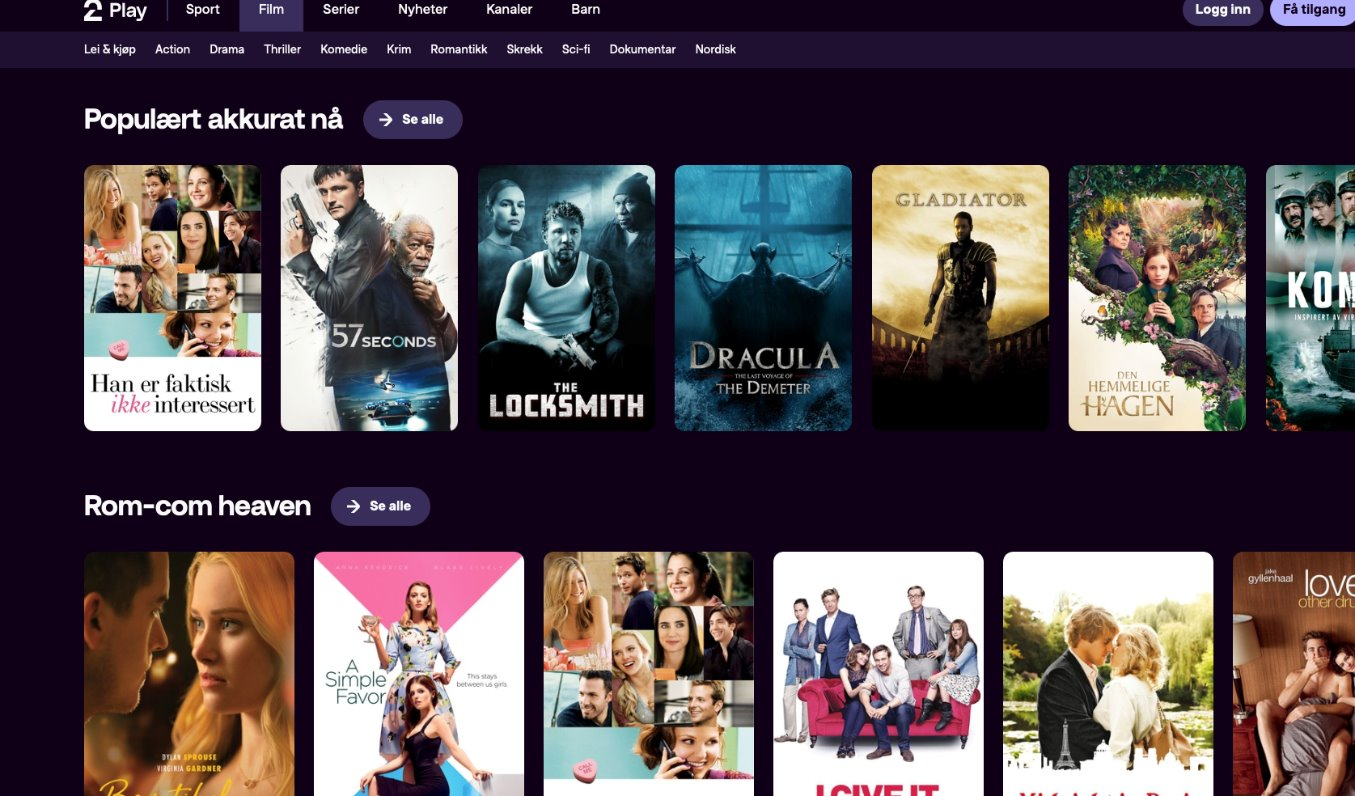
Sequential Recommender System
github.com/sfimediafutures/Evaluating-Sequential-Recommendations"Sequential Recommender System" is a TV 2 Live Video Streaming Demonstration.
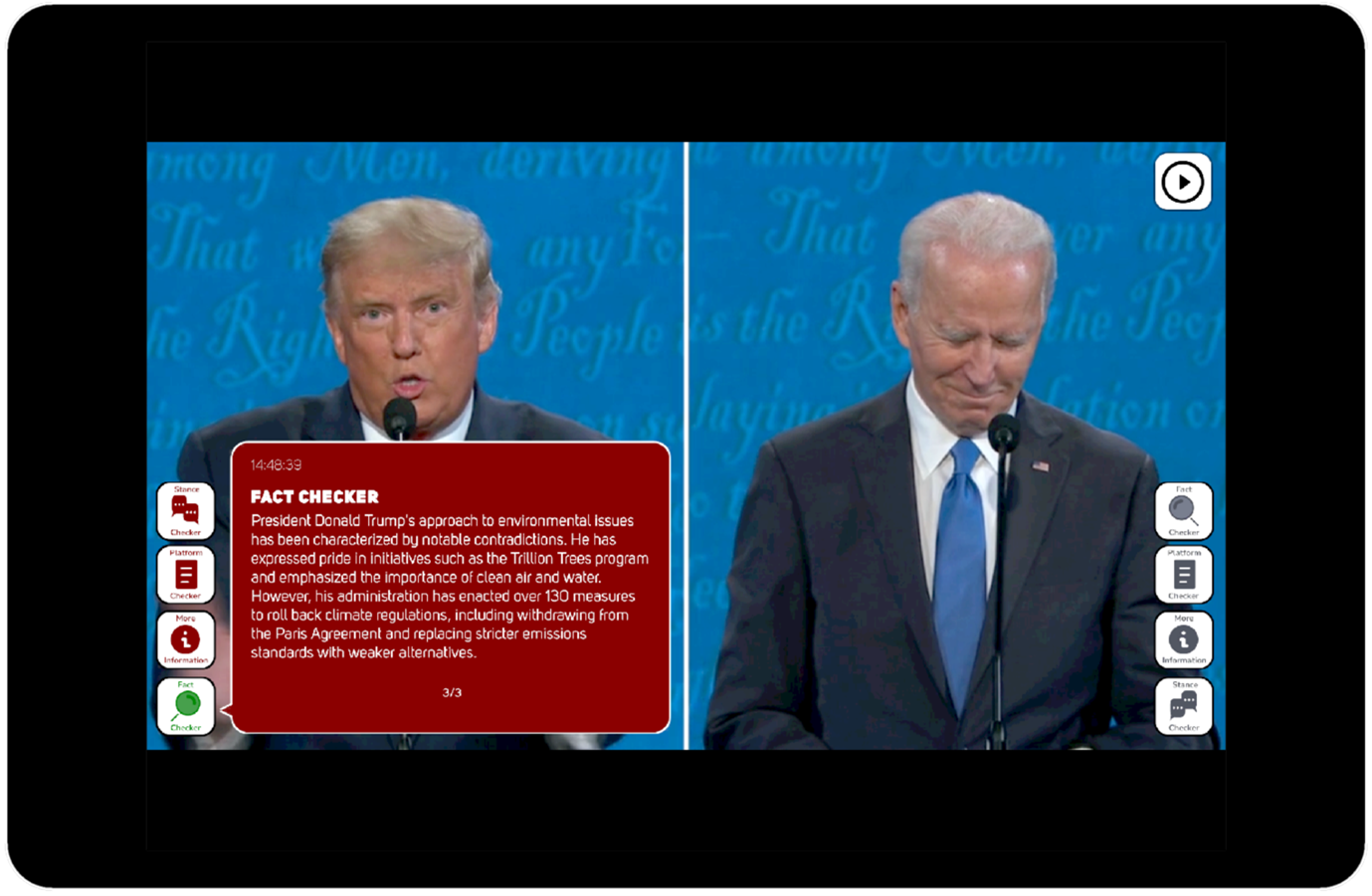
AIModerator
Watch the videoEnhancing Live Political Debates: This multimodal conversational agent enhances engagement and delivers real-time context during live-streamed political panel discussions. It enables users to verify, compare, and contextualize political claims instantly. PI: Peter D. Andrews.
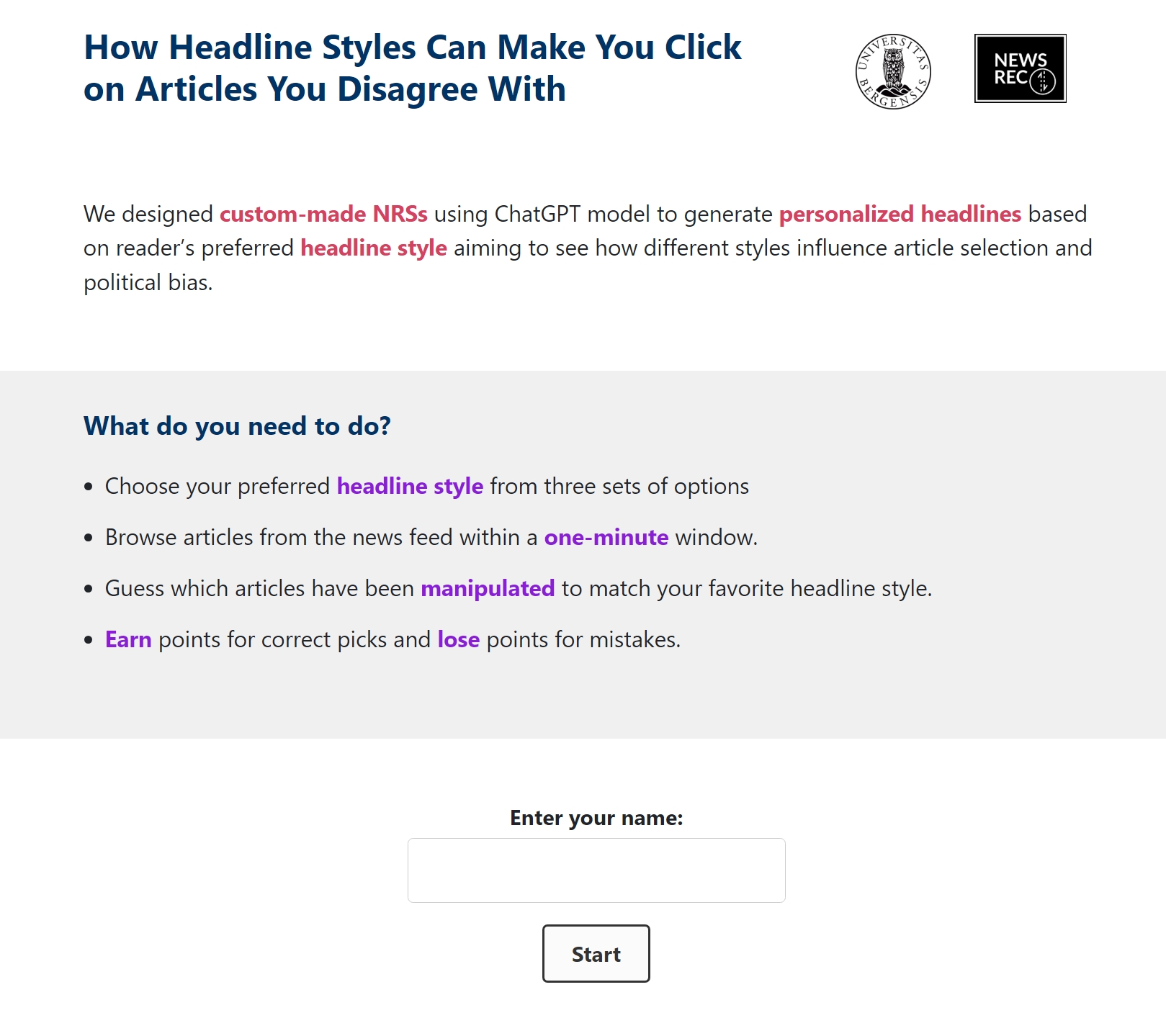
Headline Styles
http://158.39.77.221/Beyond Political Personalization: Enhancing News Recommendation with "Headline Style Customization" Using ChatGPT; We designed custom-made NRSs using ChatGPT model to generate personalized headlines based on reader’s preferred headline style aiming to see how different styles influence article selection and political bias. PI: Khadiga Seddik
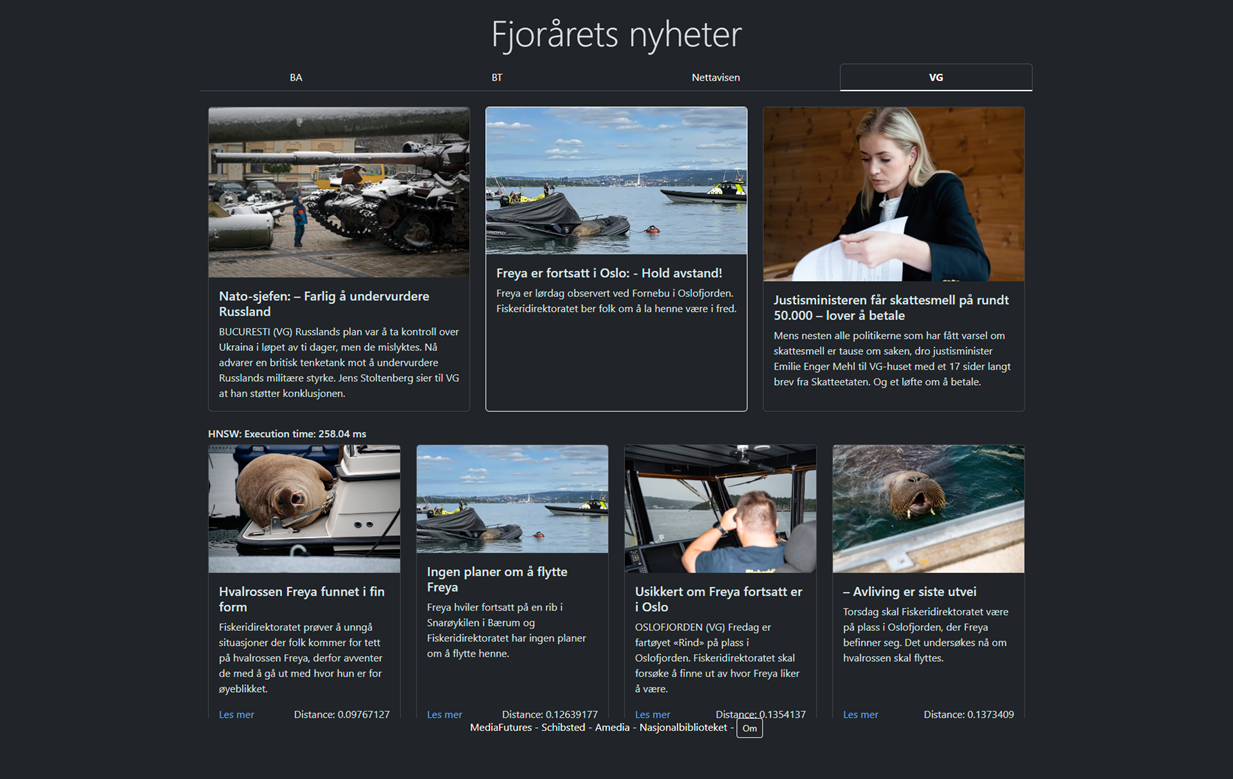
Last Years News
lastyearsnews.demo.mediafutures.no"Last Years News" is a LLM-based recommendation of news articles from BA, BT, Nettavisen and VG. It features embeddings from nb.no with the SBERT model. It will also feature semantic search and embedding API. The demo is metric-based on LLM embeddings shwon as best metric for similarity of Norwegian news articles.
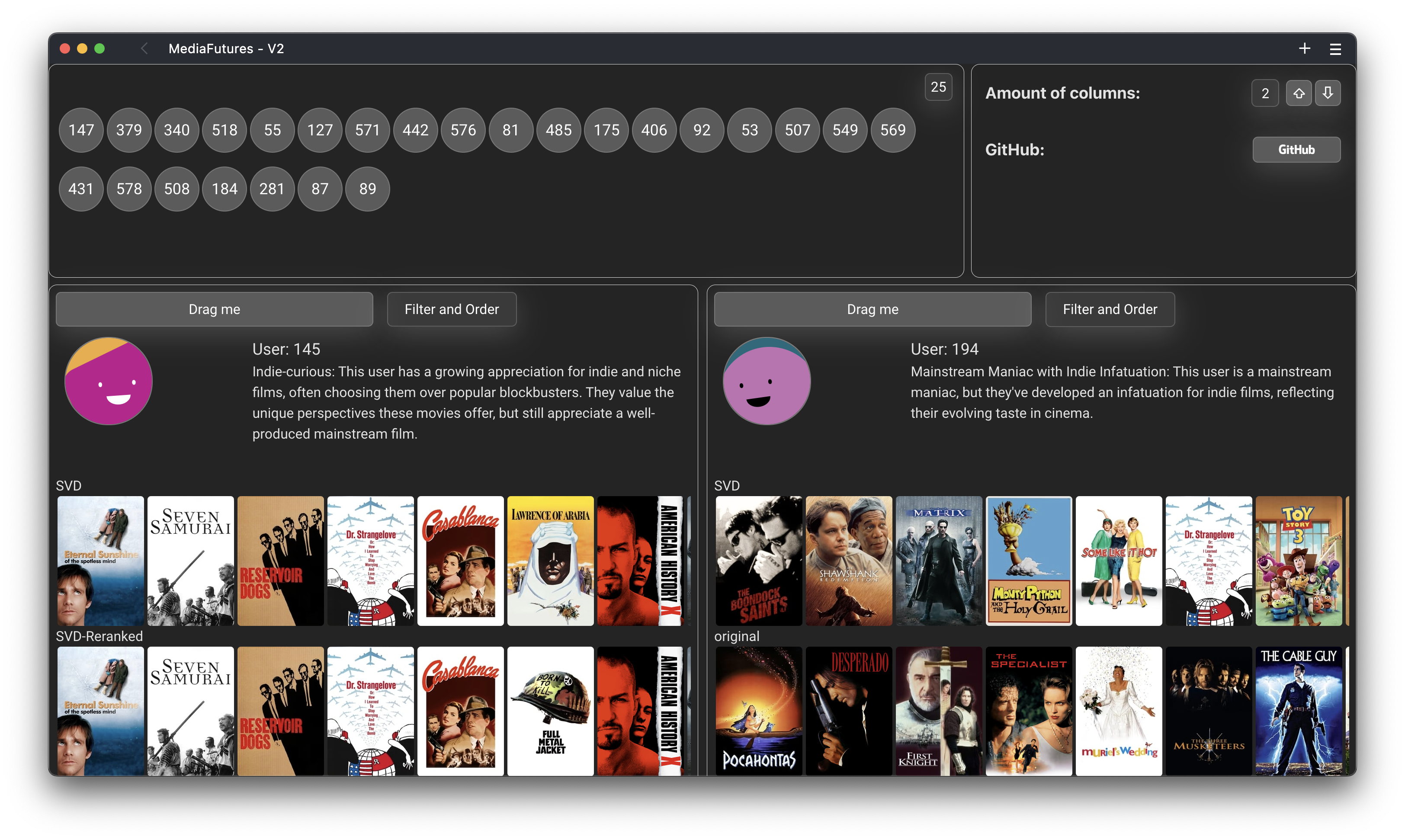
Re-Ranker V2
rerank2.demo.mediafutures.noRecViz is a demonstrational tool built to receive a dataset containing a list of user profiles and pre-generated recommendations, both original ones from a baseline recommender model and post-processed ones. The dataset is inserted as a JSON object following a predefined format. After ingesting such a dataset, the system allows to display one or multiple user profiles on-demand to visually inspect their recommendations. The user profiles will show up in the interface together with multiple rows of recommendations, raw or post-processed. The platform can be used by researchers, educators, software developers and architects, data scientists and analysts. The interactive interface enables the end user to modify the visualization in the following ways: 1) The end user can select how many and which user profiles with recommendations they would like to visualize and inspect. A dropdown menu defines the number, while drag-and-drop feature lets the end user pick user profiles from the list of the available ones. 2) If multiple RS models were used to generate multiple recommendation lists for a profile, the end user would be able to select which ones to display in the interface. This way baseline recommendations can also be compared among each other. 3) In addition to recommendations, any profile descriptions or features can be included to provide more information for the analysis, e.g., user demographics or specific preferences. The tool is based on the research of Anastasiia Klimashevskaia , who provided the recommendations and recommender system, and Developed by Snorre Alvsvåg, who provided the full stack application.
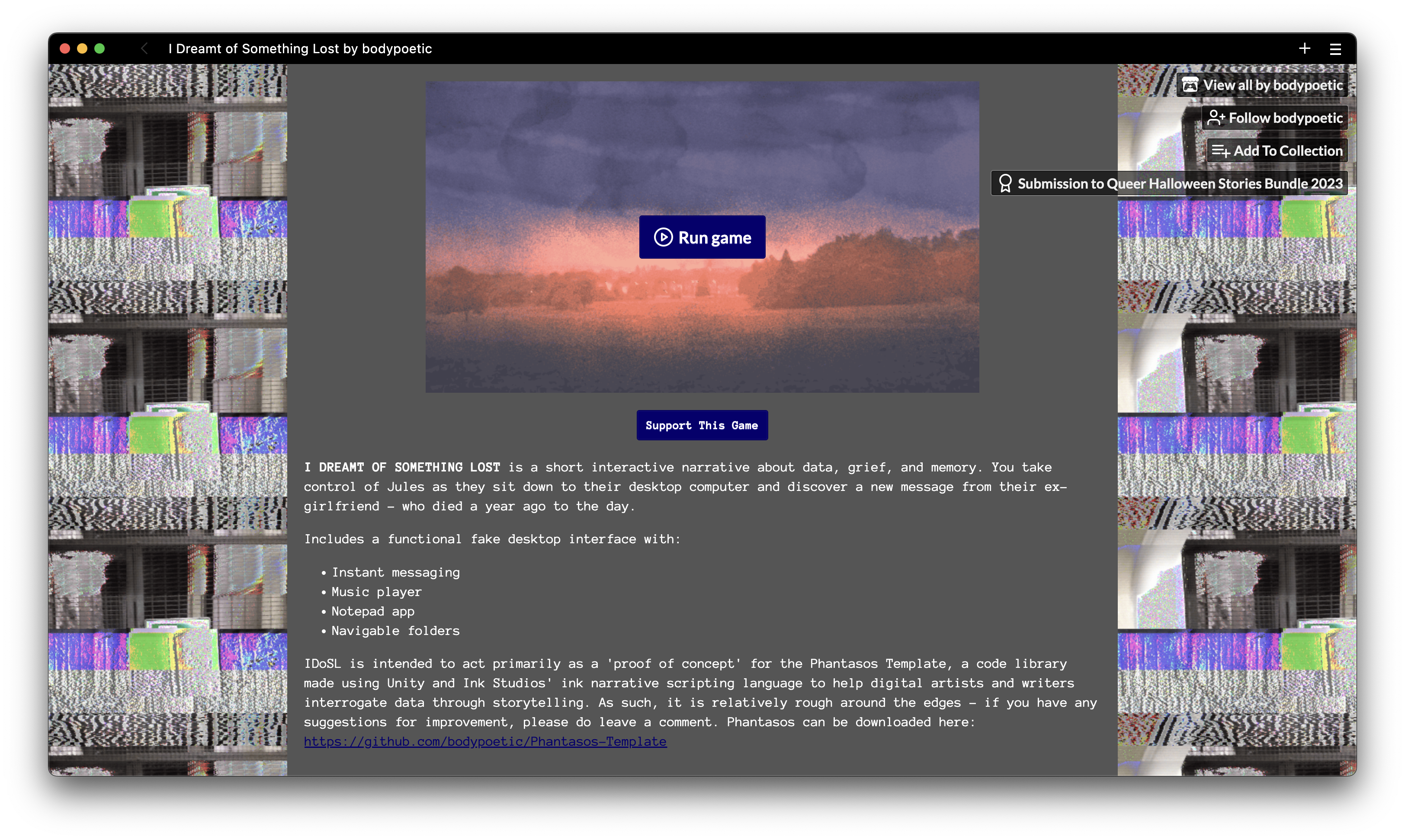
I Dreamt of Something Lost
bodypoetic.itch.io/i-dreamt-of-something-lostThe Phantasos Template is a code library designed to enable the exploration of data and the desktop interface through digital art and storytelling. It is an assemblage of Unity assets, C# scripts, and integrated plug-ins that combine to form a simple ‘fake desktop’ interface. This includes: an instant messaging system, a music player, a simulated web browser, a folder system, and a text editor. Programming has a famously steep learning curve, while electronic literature faces distinct pedagogical challenges. It is thus hoped that Phantasos will provide a valuable starting point to the novice digital writer, allowing for a deeper artistic engagement with the issues of our increasingly datafied society. I Dreamt of Something Lost is a short interactive narrative created as a demonstration of the Phantasos Template’s capabilities. It features the player character sitting down at their PC only to receive a message from their ex-girlfriend – who died a year ago to the day. The story is told almost exclusively through the characters' personal data, from instant message conversations to text files to photograph metadata. It is about how data can become a kind of haunting, how self-quantifying memory practices warp your relationship to your selfhood, and how losing someone means you also lose a version of yourself.
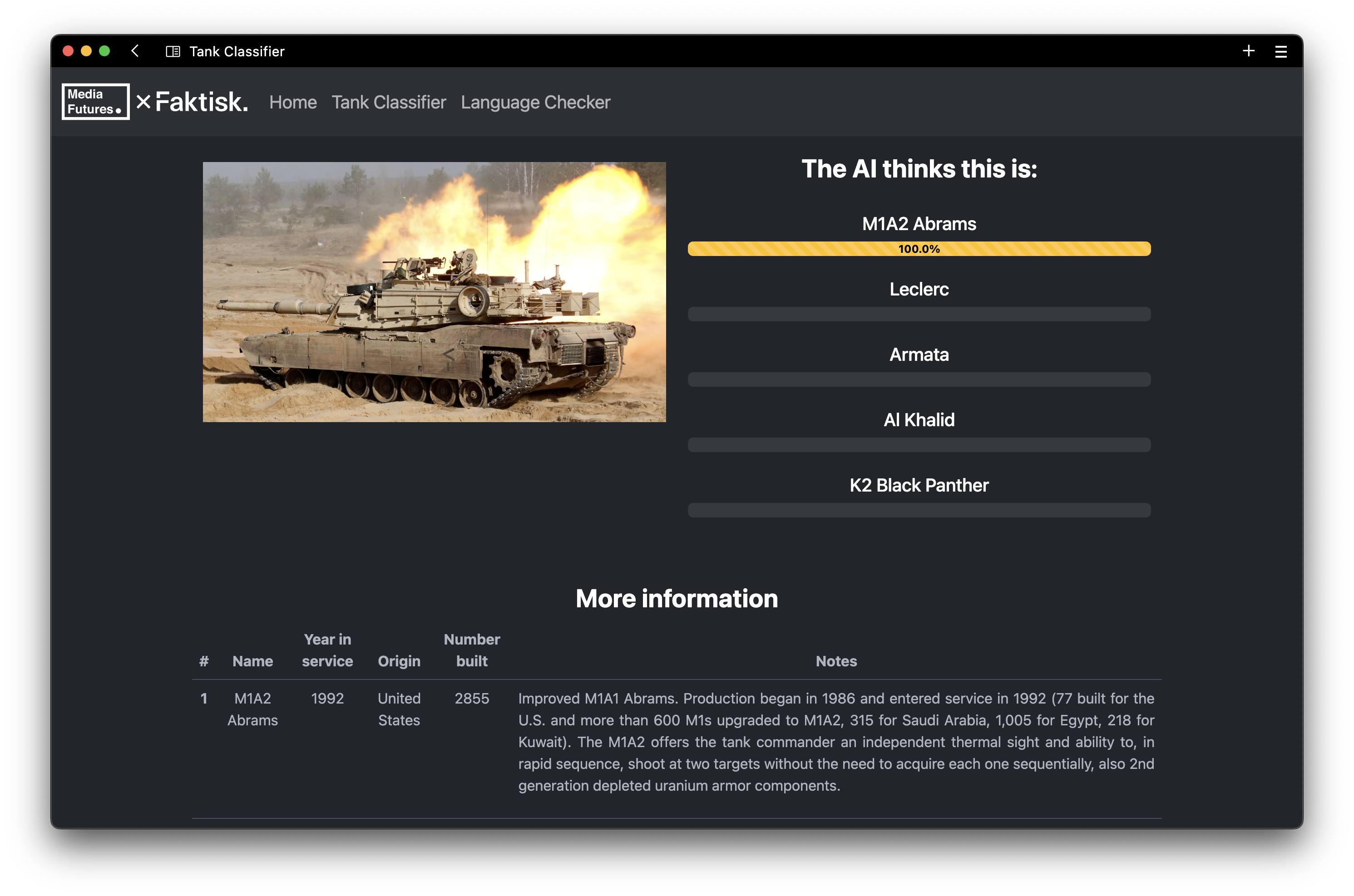
Tank Classifier
faktisk.demo.mediafutures.no/tankThe wide use of social media nowadays allows for sharing unlimited amounts of information, which also means that some of it might be incorrect. Journalists state that it is very time-consuming to manually verify all content that comes in, especially when it requires domain knowledge, as it does with artillery machinery. To be able to convey the real story and sort out the false information, AI Tank Classifier in collaboration with Faktisk has been created. The AI image classifier recognizes tanks and artillery vehicles and makes it easier for journalists and fact-checkers to verify content and spend more time on researching the sources. Author: Sohail Ahmed Khan.
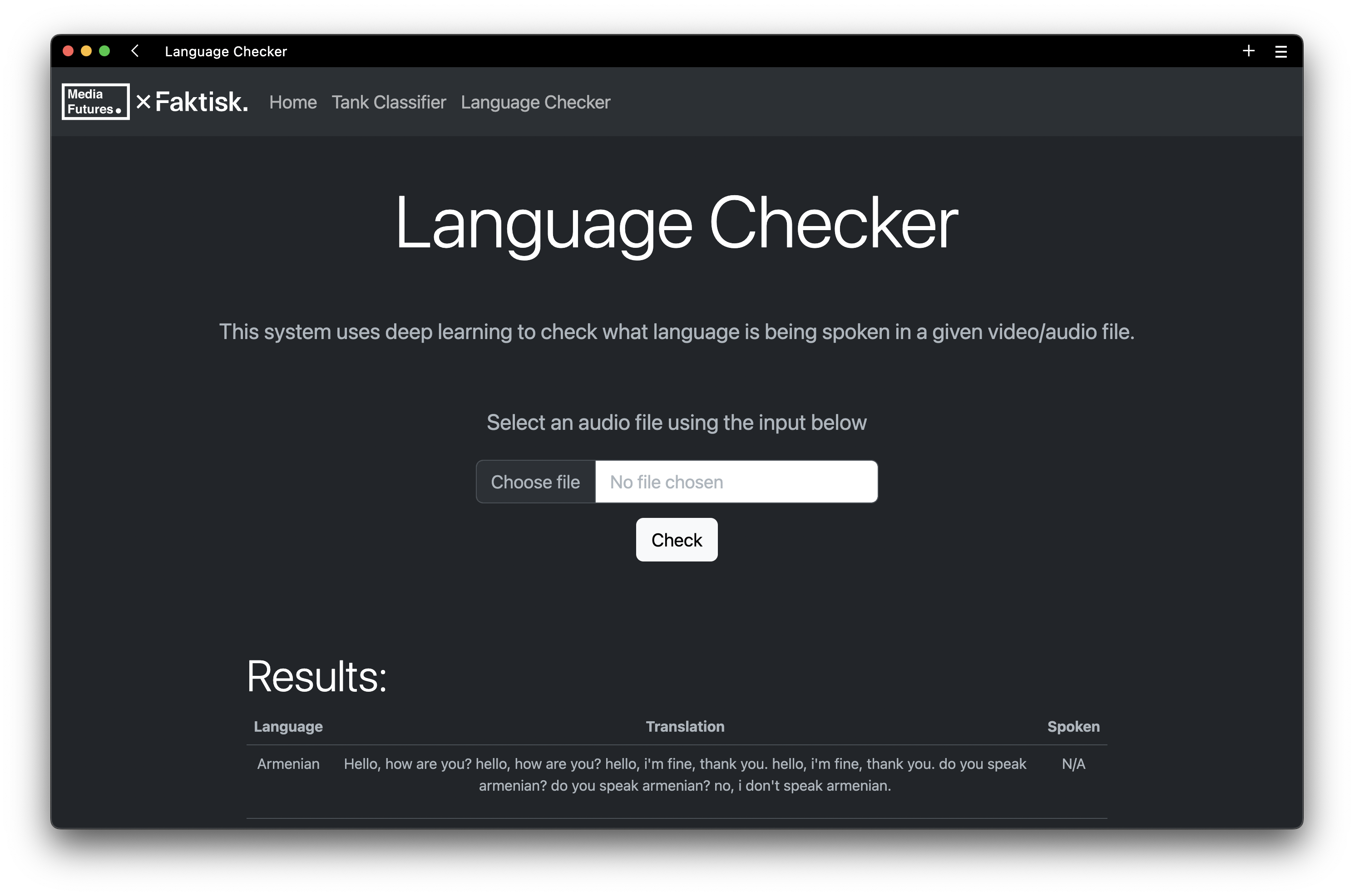
Language Checker
faktisk.demo.mediafutures.no/langIt is often that a video or an audio circulates online and contains information spoken in a language that people either do not understand or even do not recognize. This type of media can be easily used to manipulate the public by providing false translations and conveying the message that might significantly differ from the original. In order to be able to verify what language is being spoken, what is actually being said and where this language is spoken, Language Checker, created in collaboration with Faktisk, takes in an audio or video input and translates it to English, while also providing some details mentioned above. Author: Sohail Ahmed Khan.
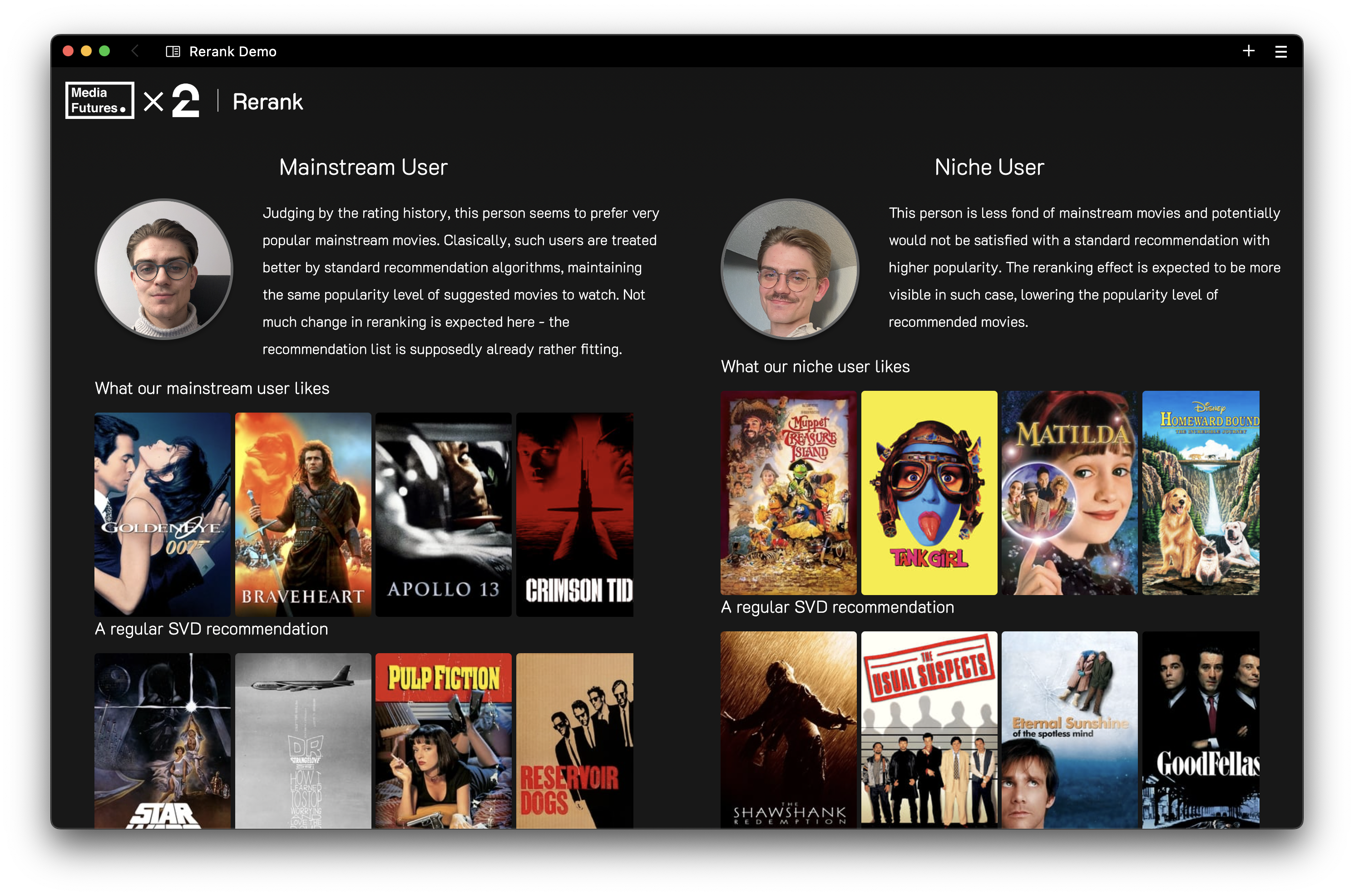
Not Mobile Friendly
Re-Ranker
rerank.demo.mediafutures.noRecommender systems are used in practice on most streaming platforms. However, the recommendations provided to users can be affected by popularity bias, meaning that the most popular items are recommended time and time again, while more niche movies or series rarely make an appearance. Re-Ranker attempts at tackling this problem, while also taking into account user's watching history, since some users prefer popular items and, thus, should get more popular recommendations, while niche users want to discover something less mainstream. Author: Anastasiia Klimashevskaia.
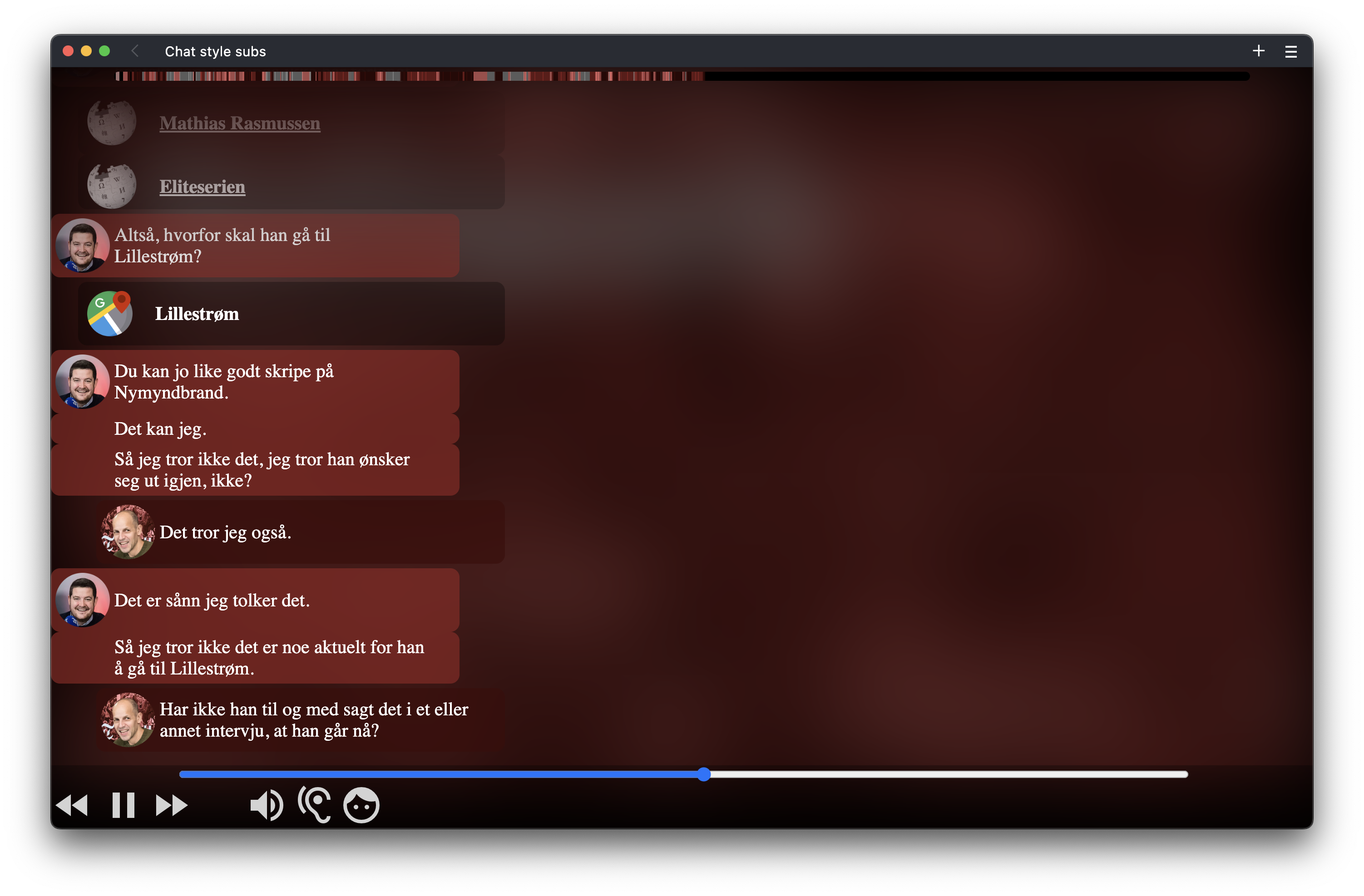
Ballspark
SingleDevice
MediaFutures edition of Ballspark. Soccer discussion (in Norwegian), quite heavy Bergen dialect. Fully automatic using Whisper (large) and nvidia/speakerverification titanet (large) for transcribing and speaker identification. Info links are based on a Norwegian trained network for annotation combined with simple Wikipedia searches. Author: Njål Borch.
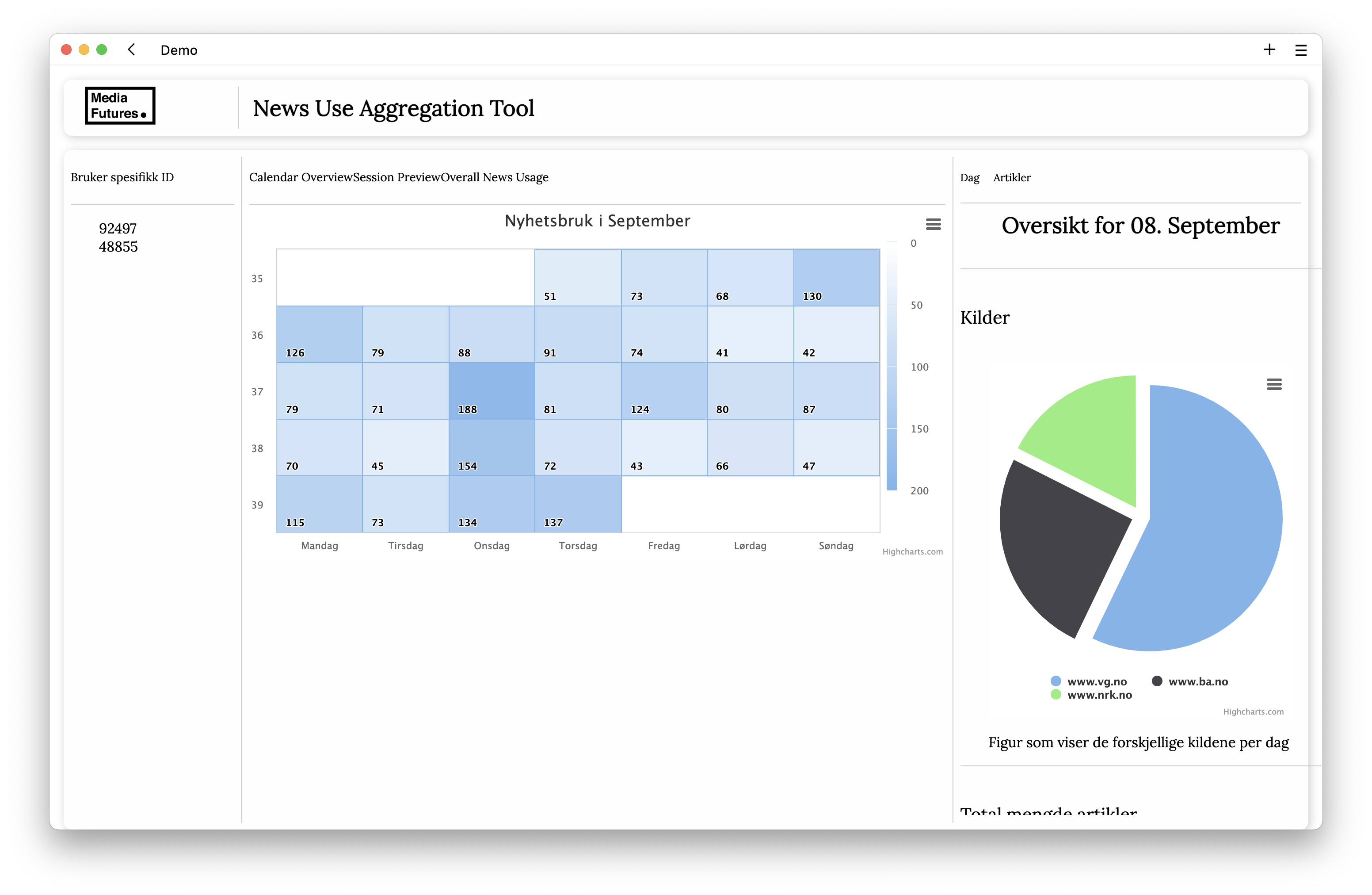
Not Mobile Friendly
News Usage
newsusage.demo.mediafutures.noTo be able to build successful and useful news recommender systems, it is crucial to understand media consumption, which can often be challenging for researchers due to overwhelming amount of content online that proves to be difficult to track. News Use Aggregation Tool allows to look deeper into users' media diet and visually represent how users consume media, focusing on user history over a month and providing infographics that can be used for further research. Author: Marianne Borchgrevink-Brækhus.
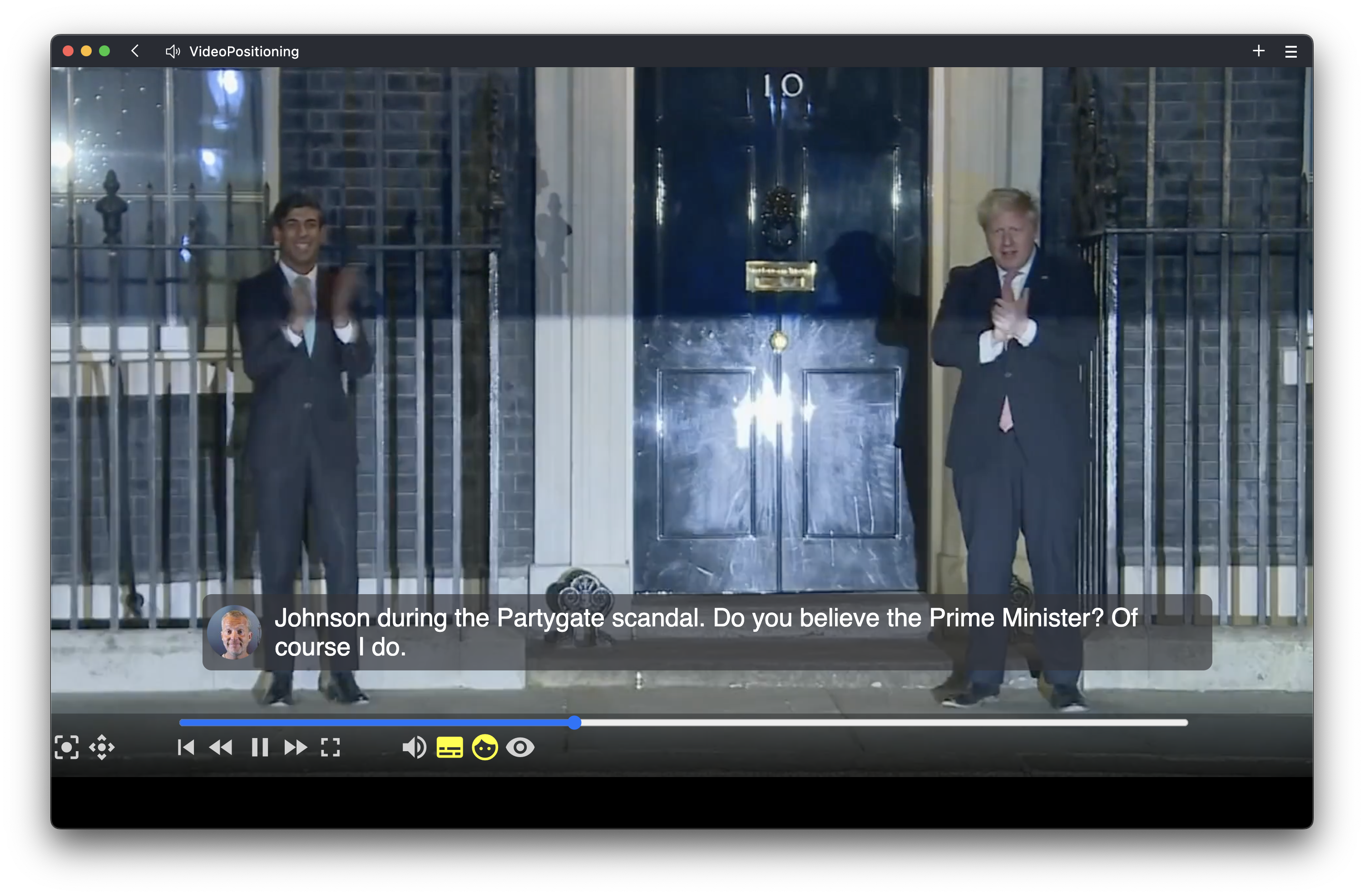
News in English
MediaFutures edition of News in English. Created for Norwegian school pupulils. Added some relevant articles manually, otherwise automated. Texts created fully automatic using Whisper (large) and nvidia/speakerverification titanet (large) for transcribing and speaker identification. Info links are based on a Norwegian trained network for annotation combined with simple Wikipedia searches. Author: Njål Borch.
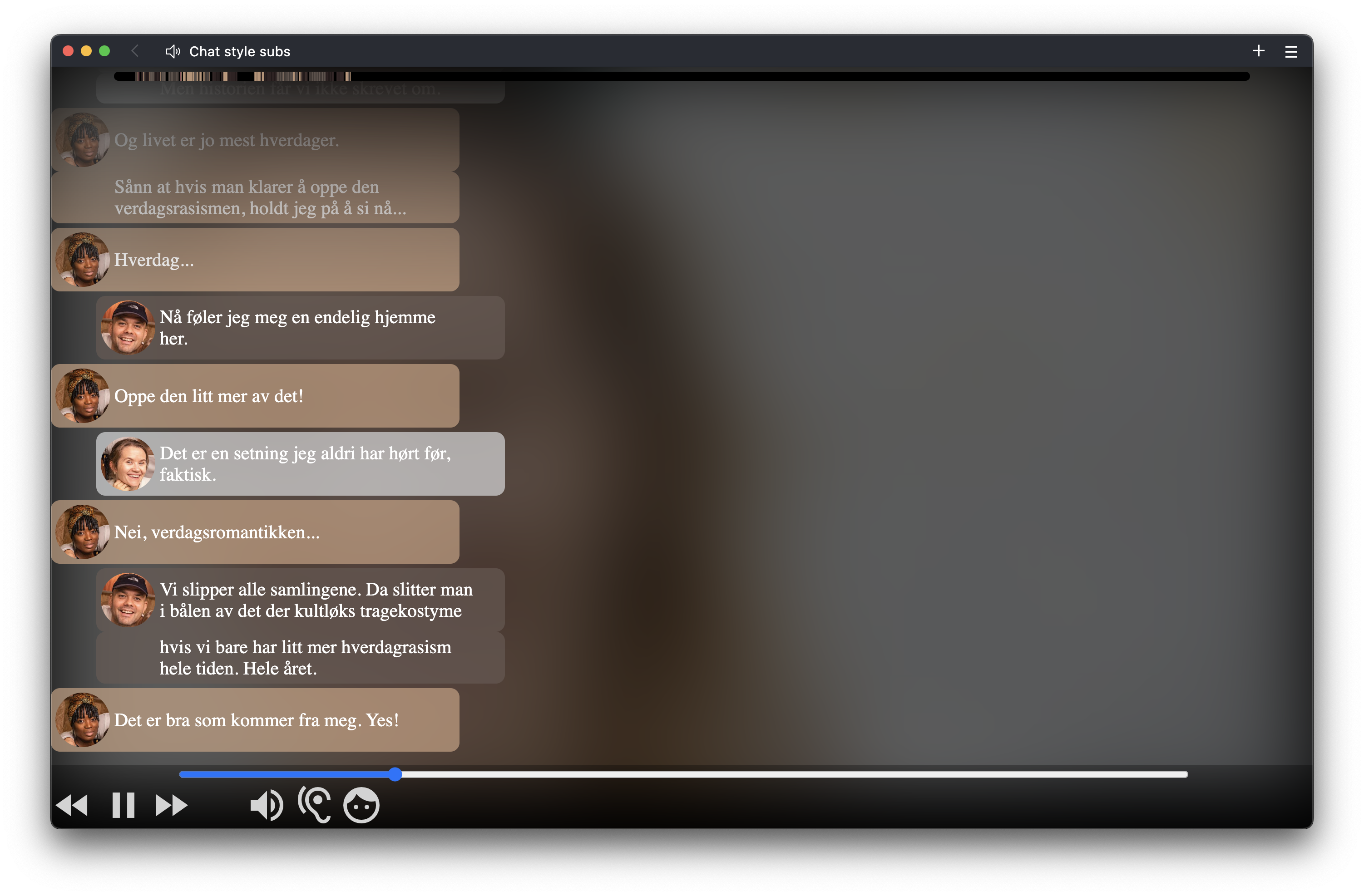
Lørdagsrådet
SingleDevice
MediaFutures edition of Lørdagsrådet. A discussion show with four panelists in a humourous, fast paced problem solving debate. Fully automatic using Whisper (large) and nvidia/speakerverification titanet (large) for transcribing and speaker identification. Info links are based on a Norwegian trained network for annotation combined with simple Wikipedia searches. Author: Njål Borch.
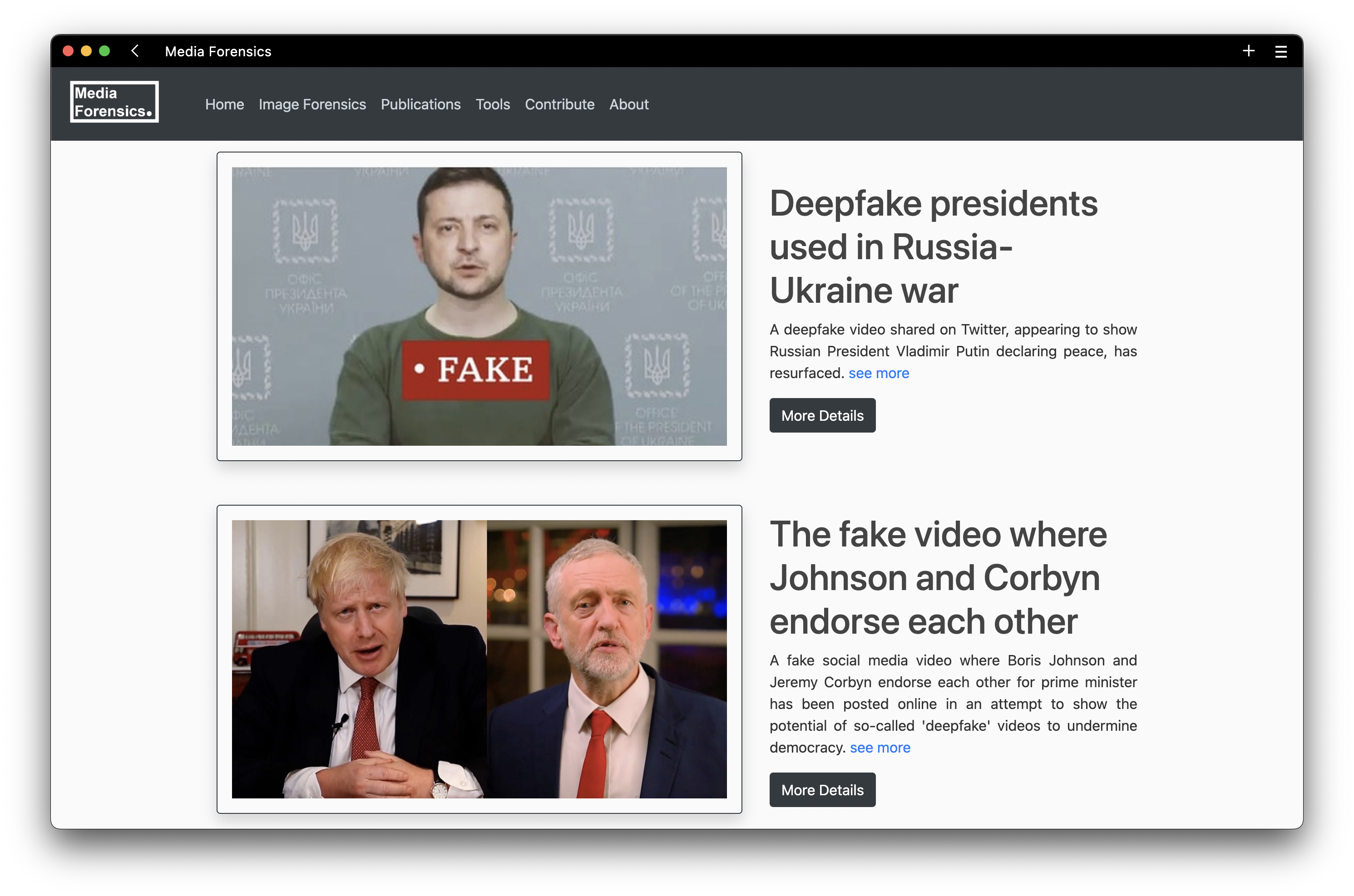
Media Forensics
mediaforensics.mediafutures.noFact-checking visual user-generated content is crucial to be able to navigate in the streams of information provided online. Media Forensics Repository presents a diverse set of resources to assist journalists, fact-checkers, and the public in verifying such content. Author: Sohail Ahmed Khan.
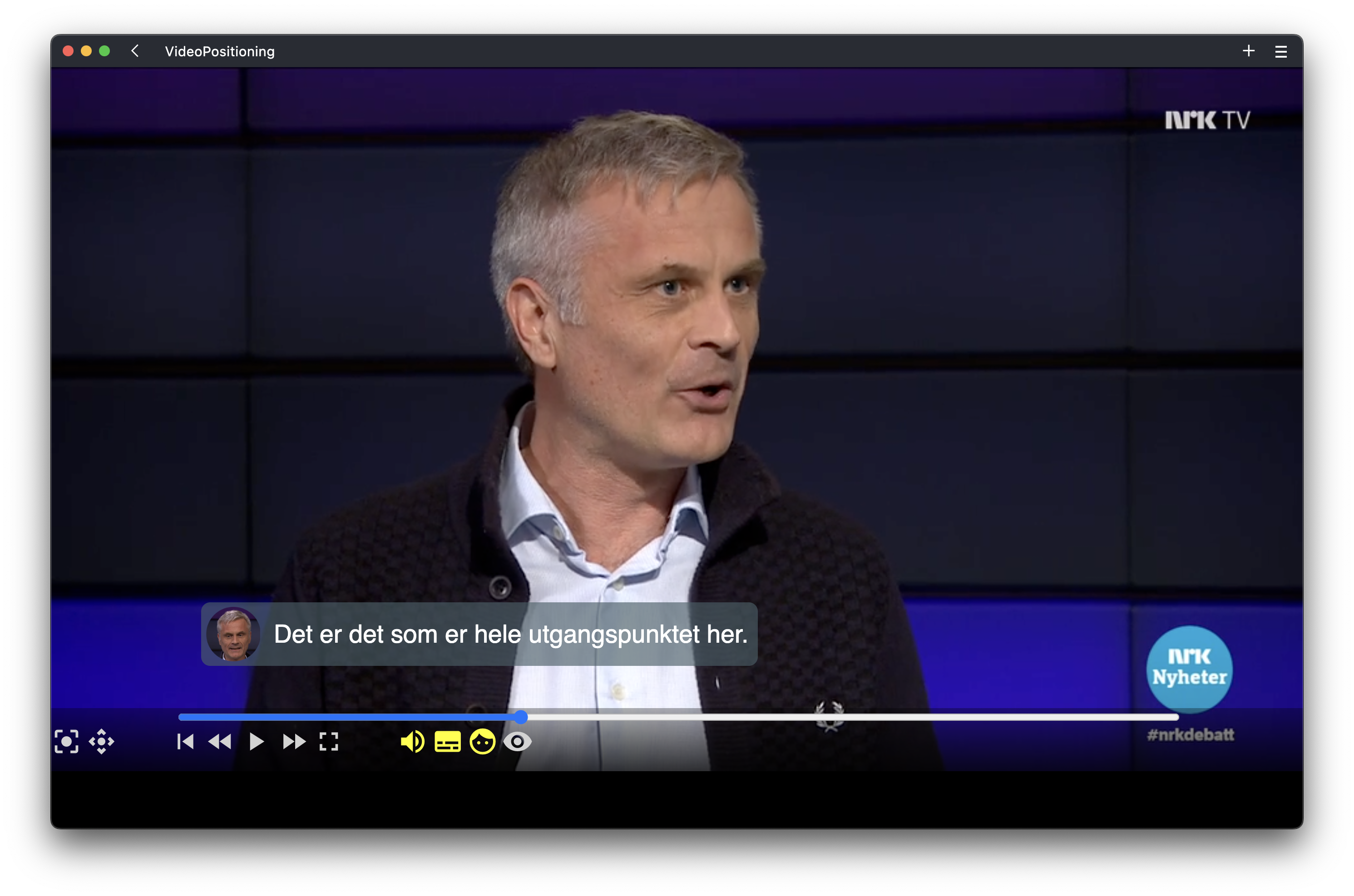
Debatten
MultiDevice
MediaFutures edition of Debatten, 1. November 2022. Includes dynamic aspect ratio (MediaPipes AI), Fancy Subs (Automated, Whisper++). Author: Njål Borch.
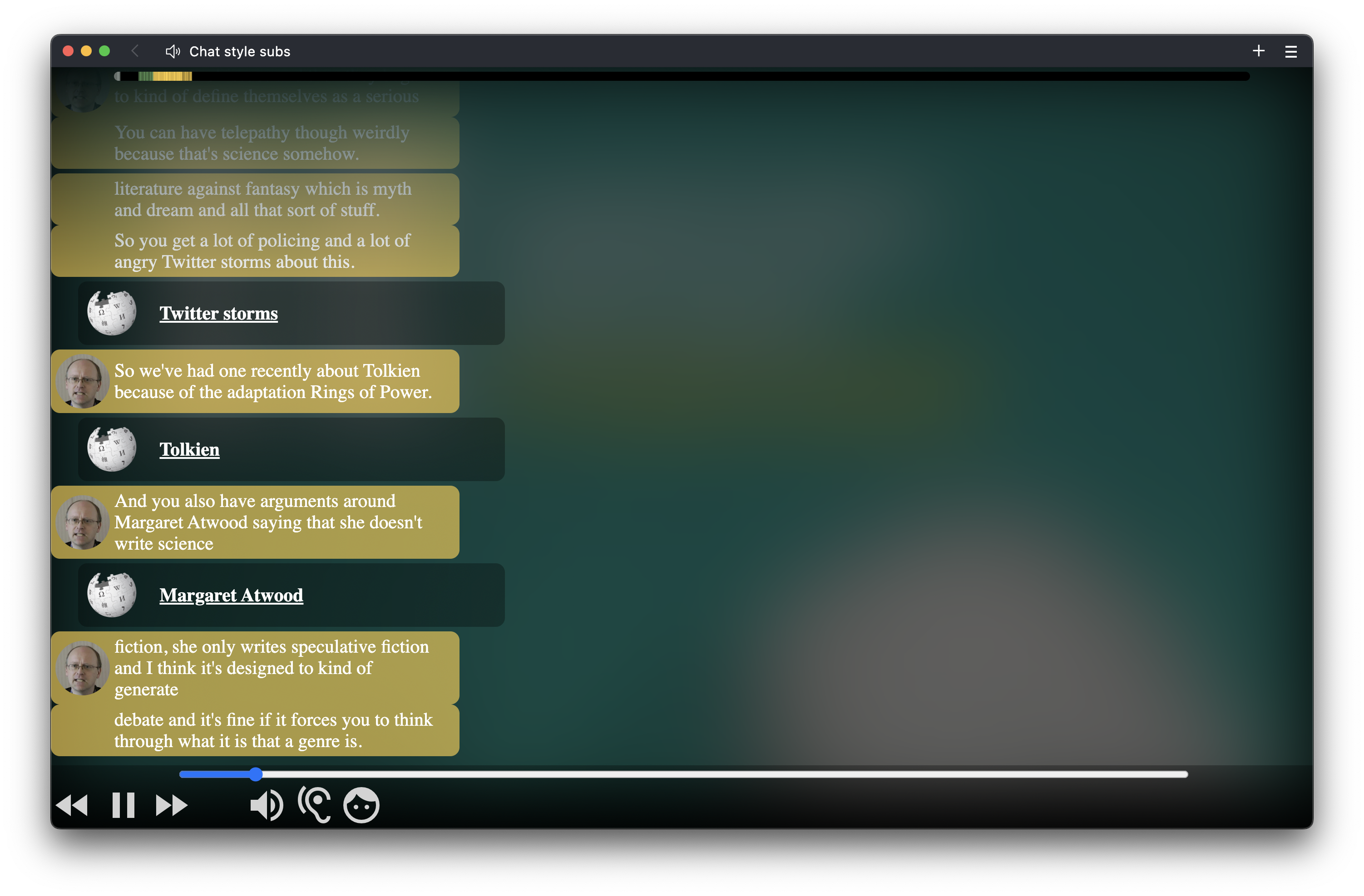
History Extra Podcast
SingleDevice
MediaFutures edition of History Extra. Fully automatic using Whisper (large) and nvidia/speakerverification titanet (large) for transcribing and speaker identification. Info links are based on a Norwegian trained network for annotation combined with simple Wikipedia searches. Author: Njål Borch.
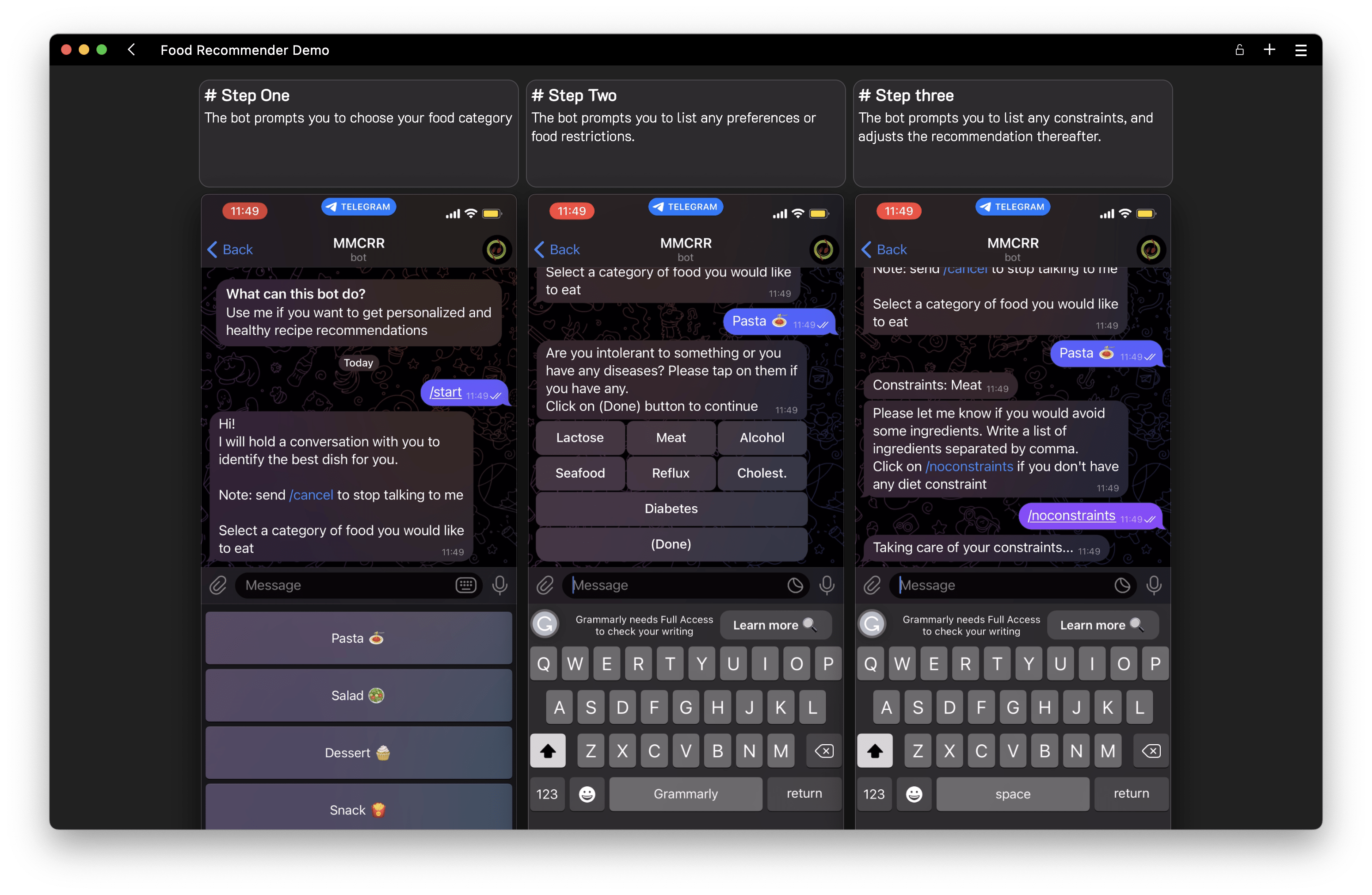
Food Recommeder Bot
foodbot.demo.mediafutures.noHow can recommender systems be used for guiding users towards healthy food choices? By using the Food Recommender Bot and providing their allergies and food preferences, users get access to recipes recommendations that focus on different health-related goals, compared to what users might normally eat. Available as a bot and can be used from a mobile phone. Author: Ayoub El Majjodi.
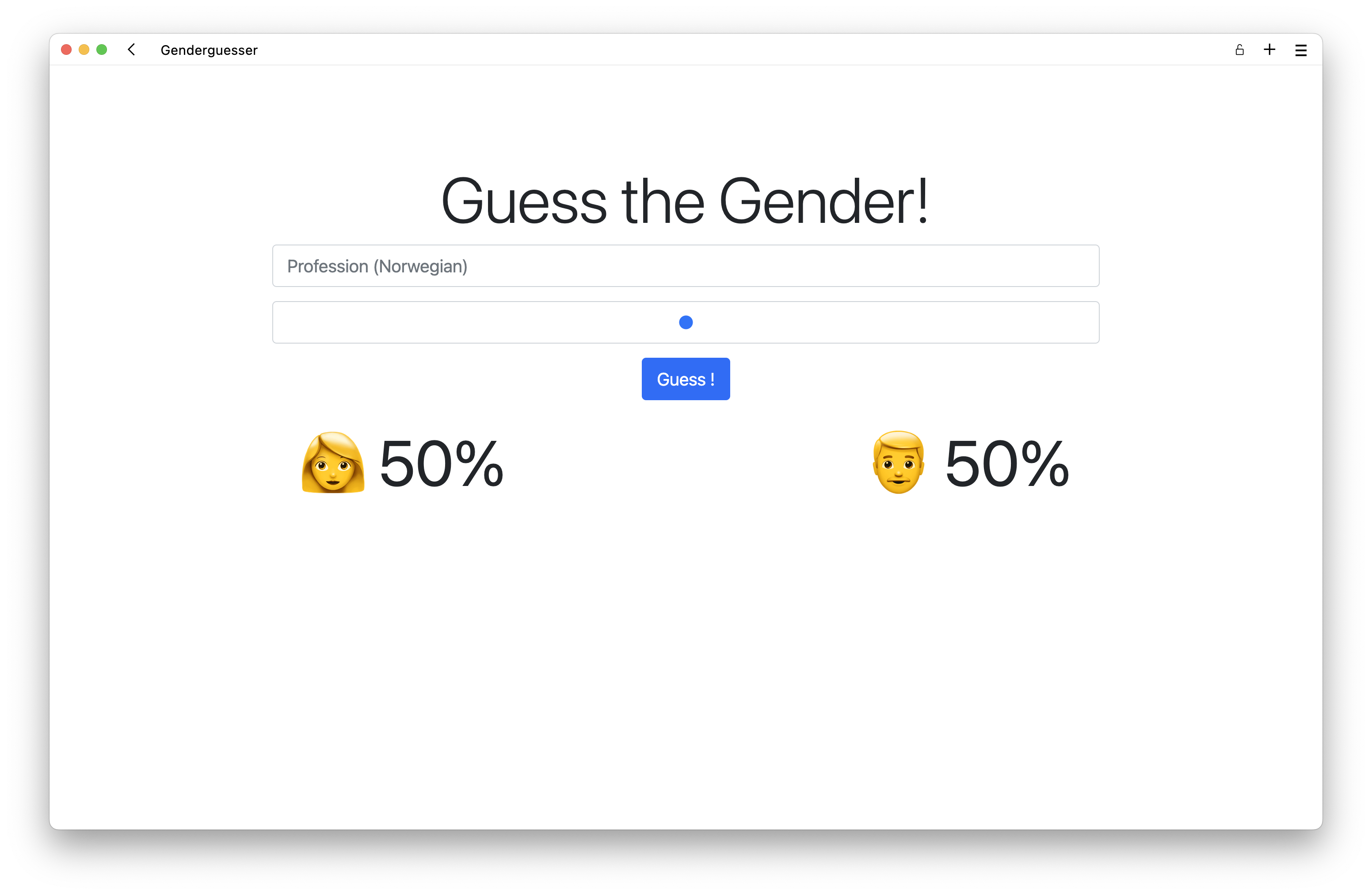
Gender Guesser
genderguesser.demo.mediafutures.noCurrently there is a big debate on use of language models for various aspects of everyday life: generating text, reviewing policies and etc. However, understanding how these models are created and what data is used for training is crucial for deciding whether these models are fair and applicable to real life. Gender Guesser lets users interactively learn about gender bias in Norwegian BERT models. Author: Samia Touileb.
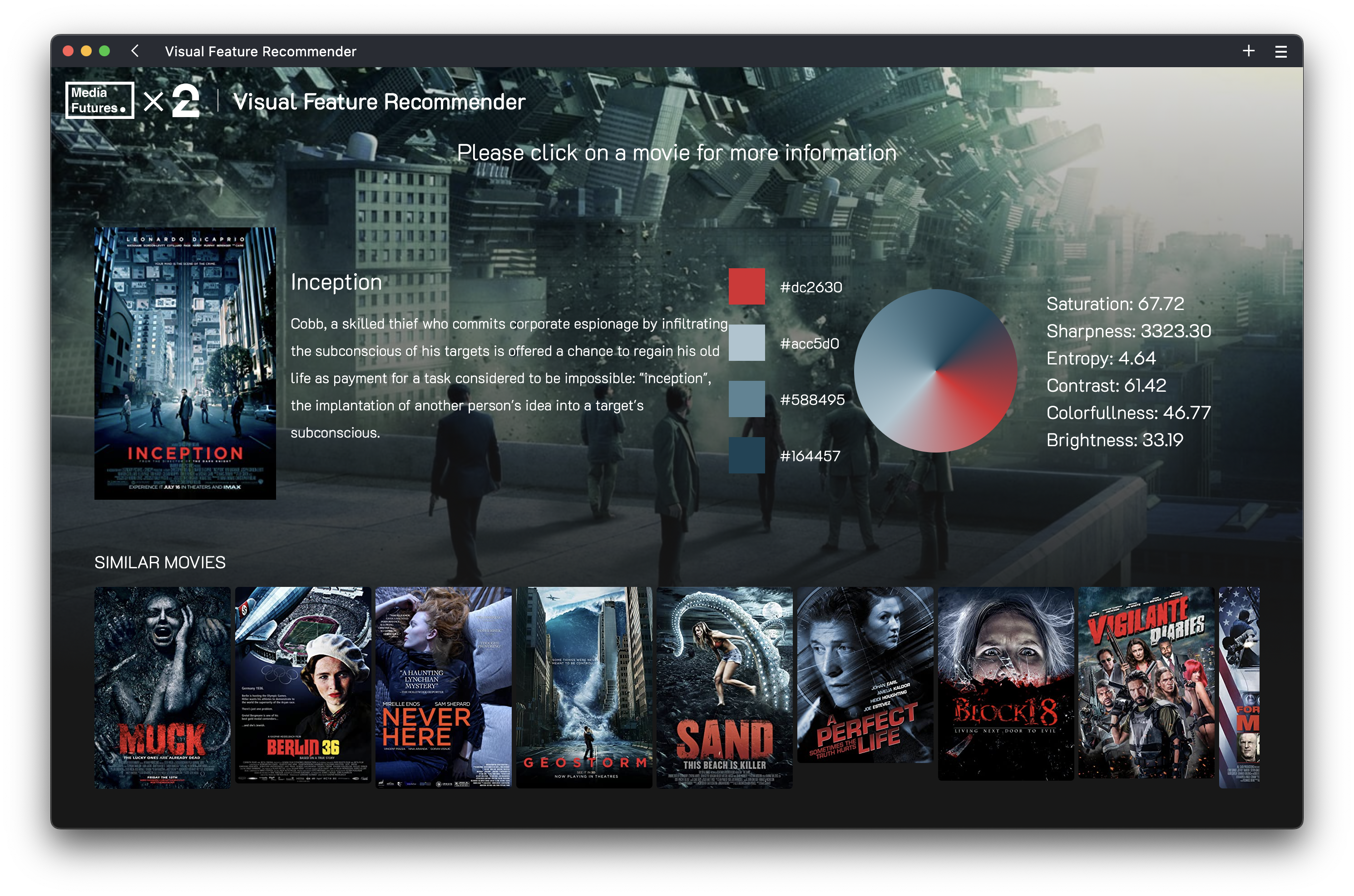
Not Mobile Friendly
Visual Feature Recommender
visfeat.demo.mediafutures.noMovie recommenders are quite efficient at providing good suggestions, once there is enough data about both users and items from the platform. However, how do we tackle the Cold Start problem, when there is no information about users yet or when information about items themselves is unavailable? Visual Feature Recommender provides a novel way of approaching the problem by automatically extracting stylistic visual features from movie posters and recommending movies based on them. Author: Snorre Alvsvåg.
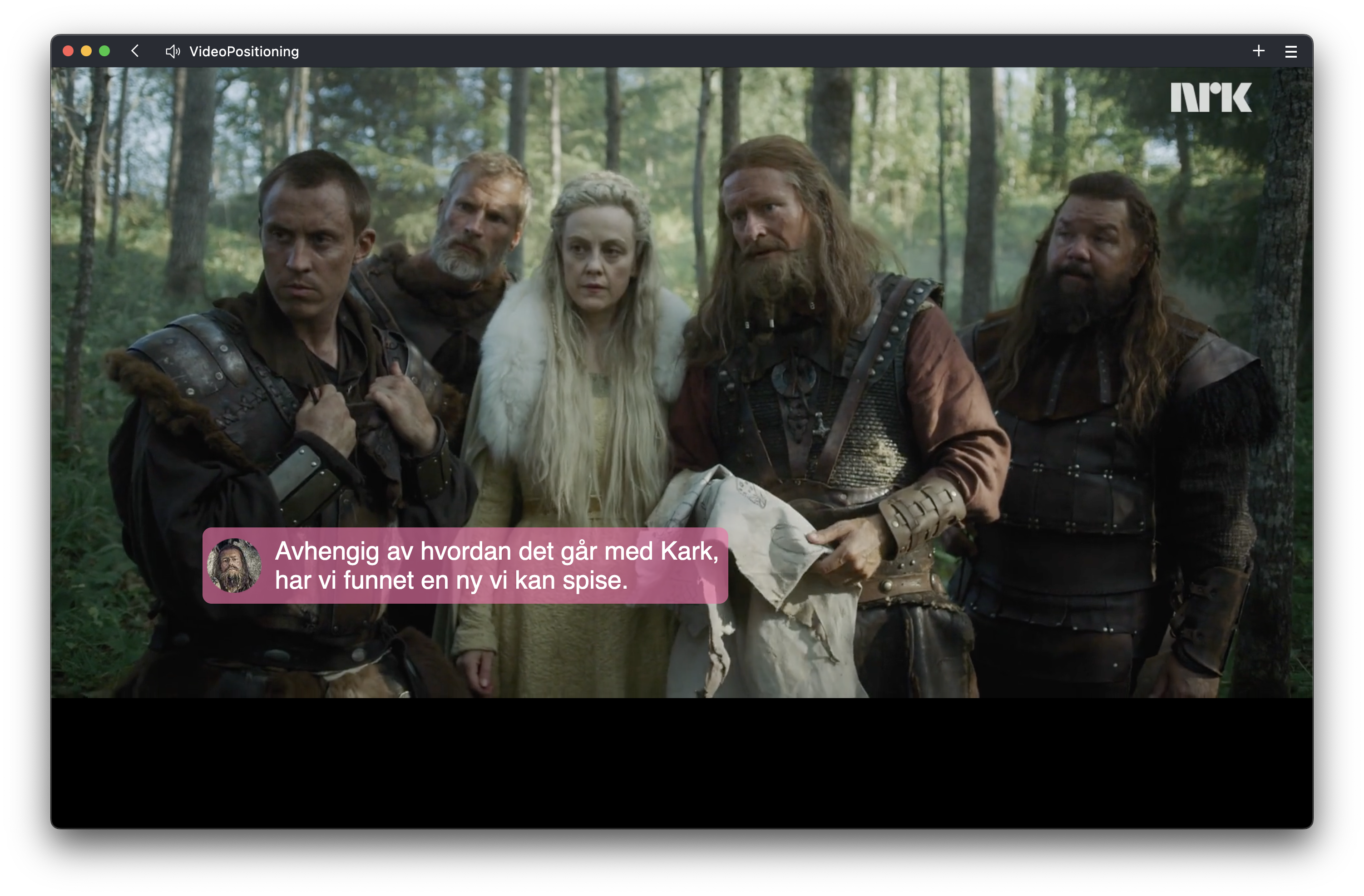
Vikingane
MultiDevice
MediaFutures edition of Vikingane Series 3, episode 1. Includes recorded audio descriptions, new subtitles and dynamic aspect ratio. AI Video uses an AI to position the dynamic aspect ratio. Author: Njål Borch.
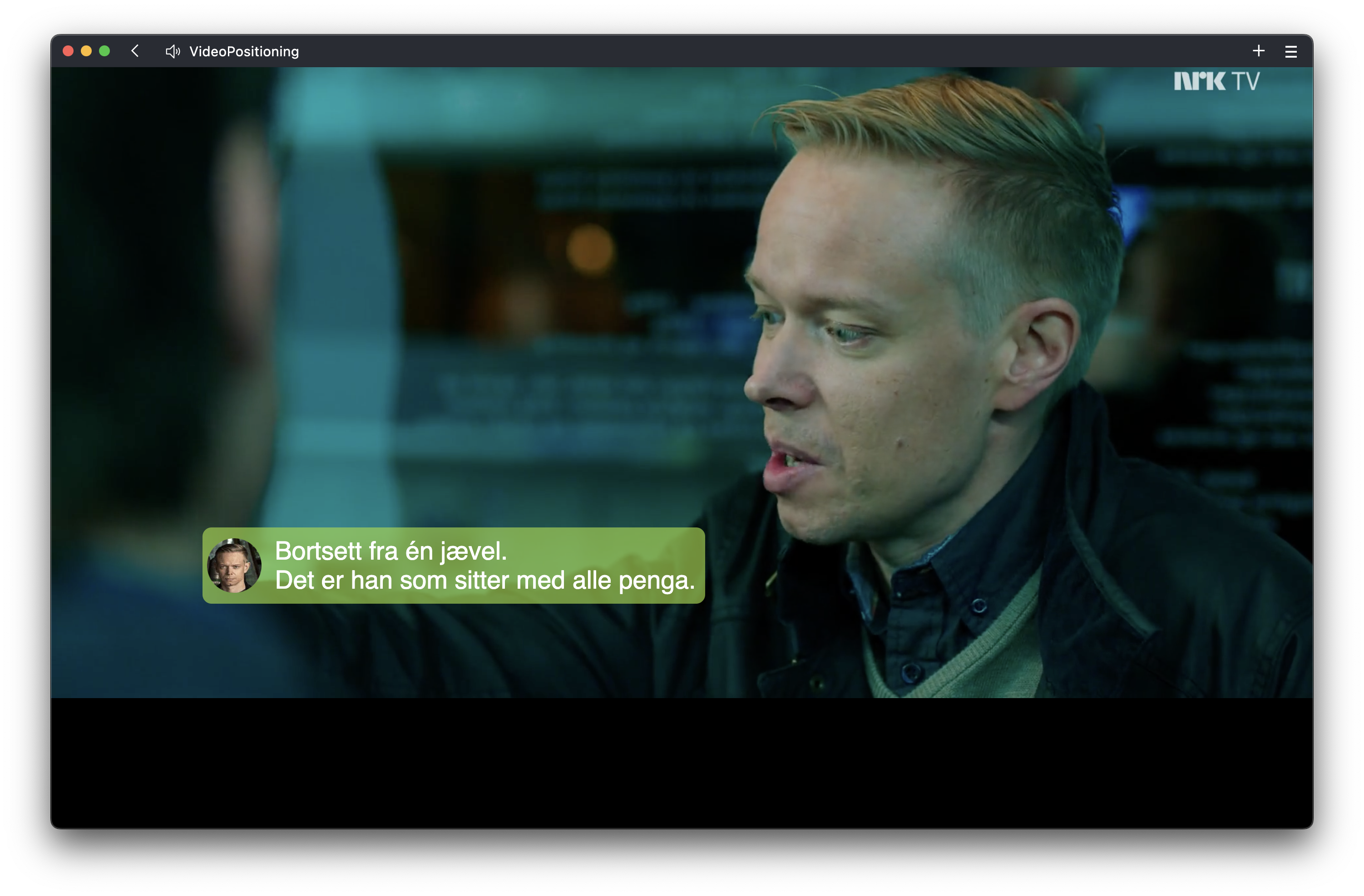
Valkyrien
MultiDevice
MediaFutures edition of Valkyrien Series 1, episode 1. Includes recorded audio descriptions, new subtitles and dynamic aspect ratio. AI Video uses an AI to position the dynamic aspect ratio. Author: Njål Borch.
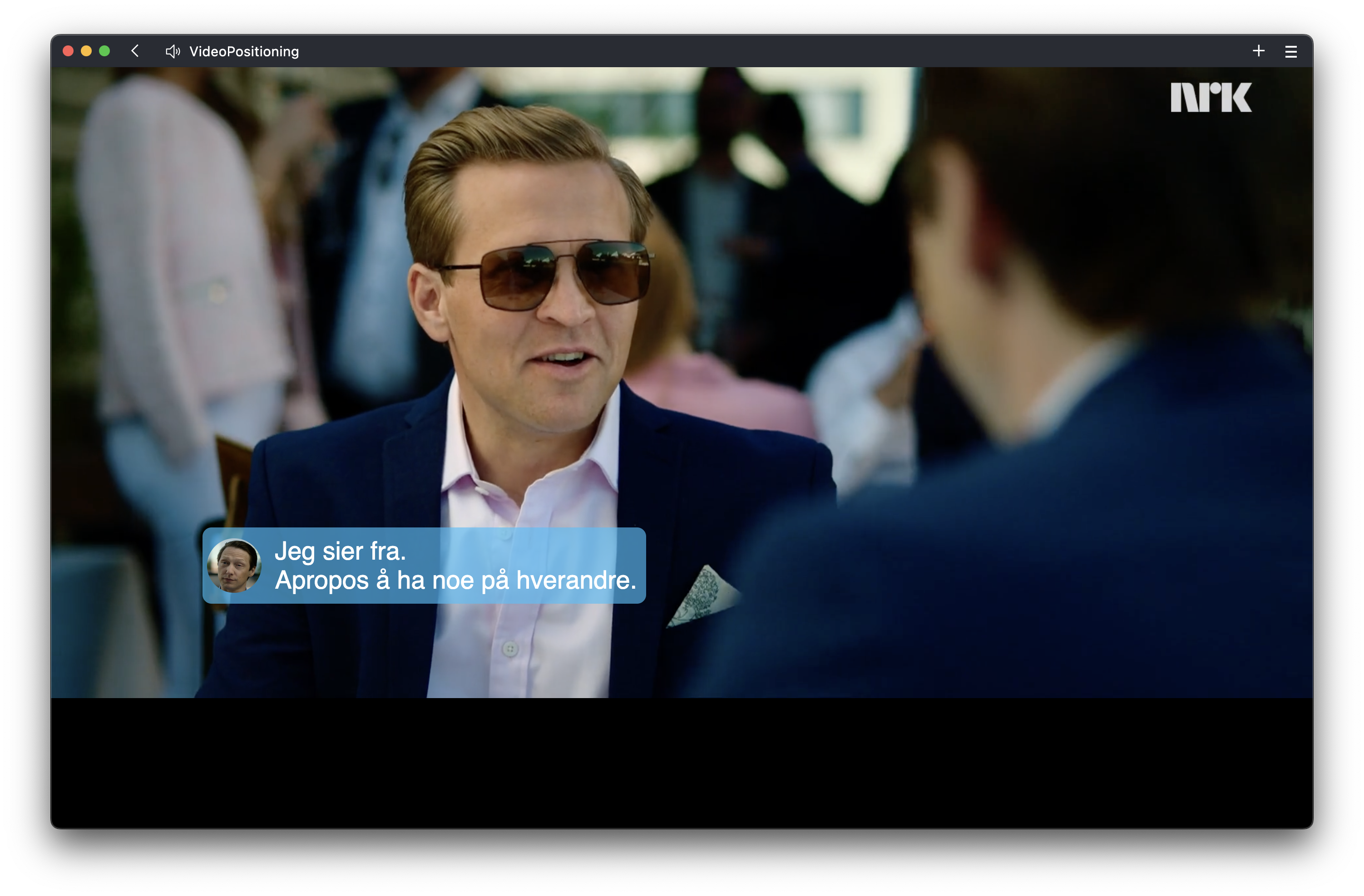
Exit2
MultiDevice
MediaFutures edition of Exit Series 2, episode 1. Includes recorded audio descriptions, new subtitles and dynamic aspect ratio. AI Video uses an AI to position the dynamic aspect ratio. Author: Njål Borch.
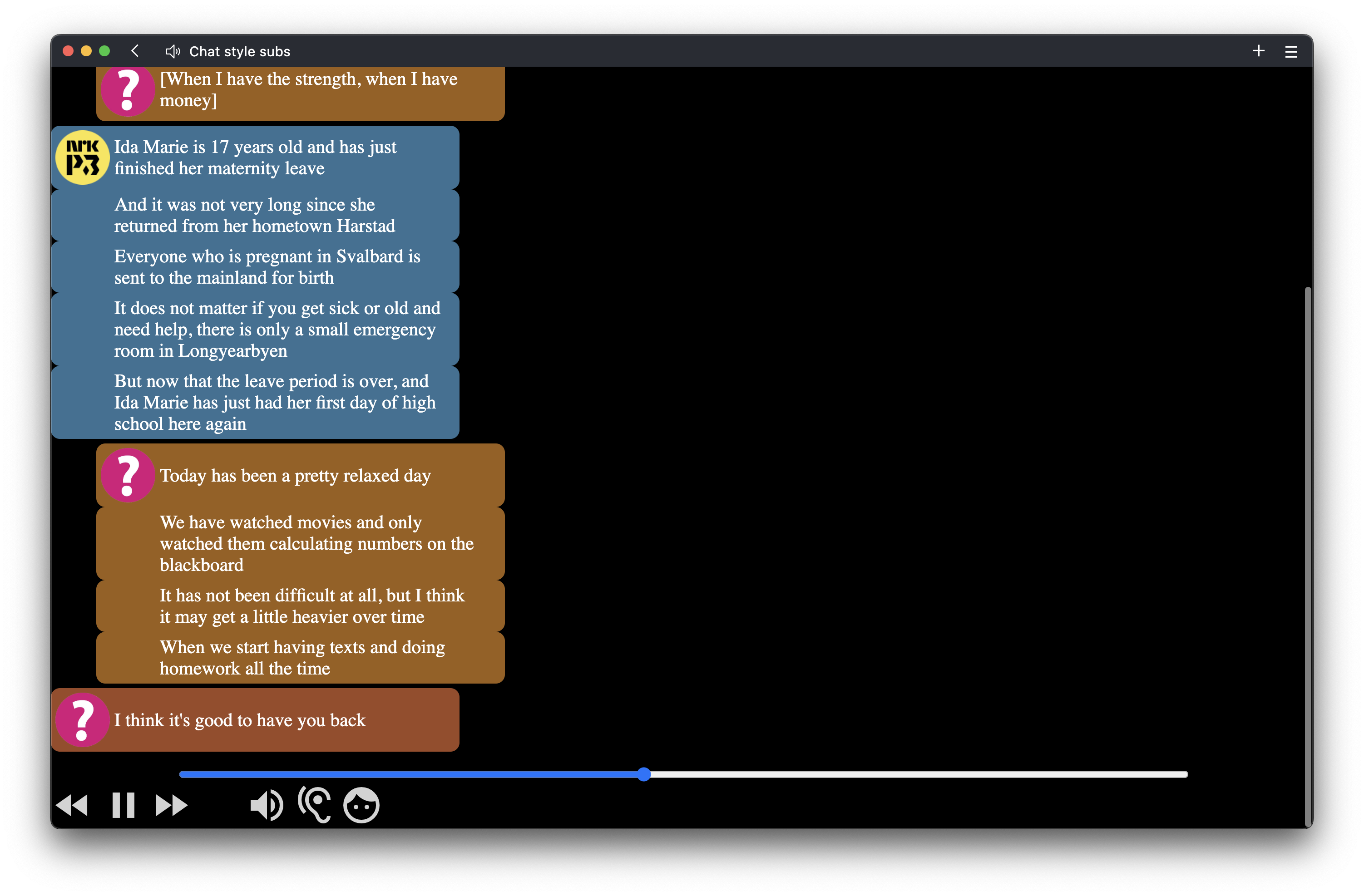
Svaltards
This is a subtitled podcast (actually a radio documentary). It has been subtitled with fancy subtitles and there is also a slideshow edition where some visuals have been added. No controls or audio on the chat, so slides must be used to control it (for now). Author: Njål Borch.
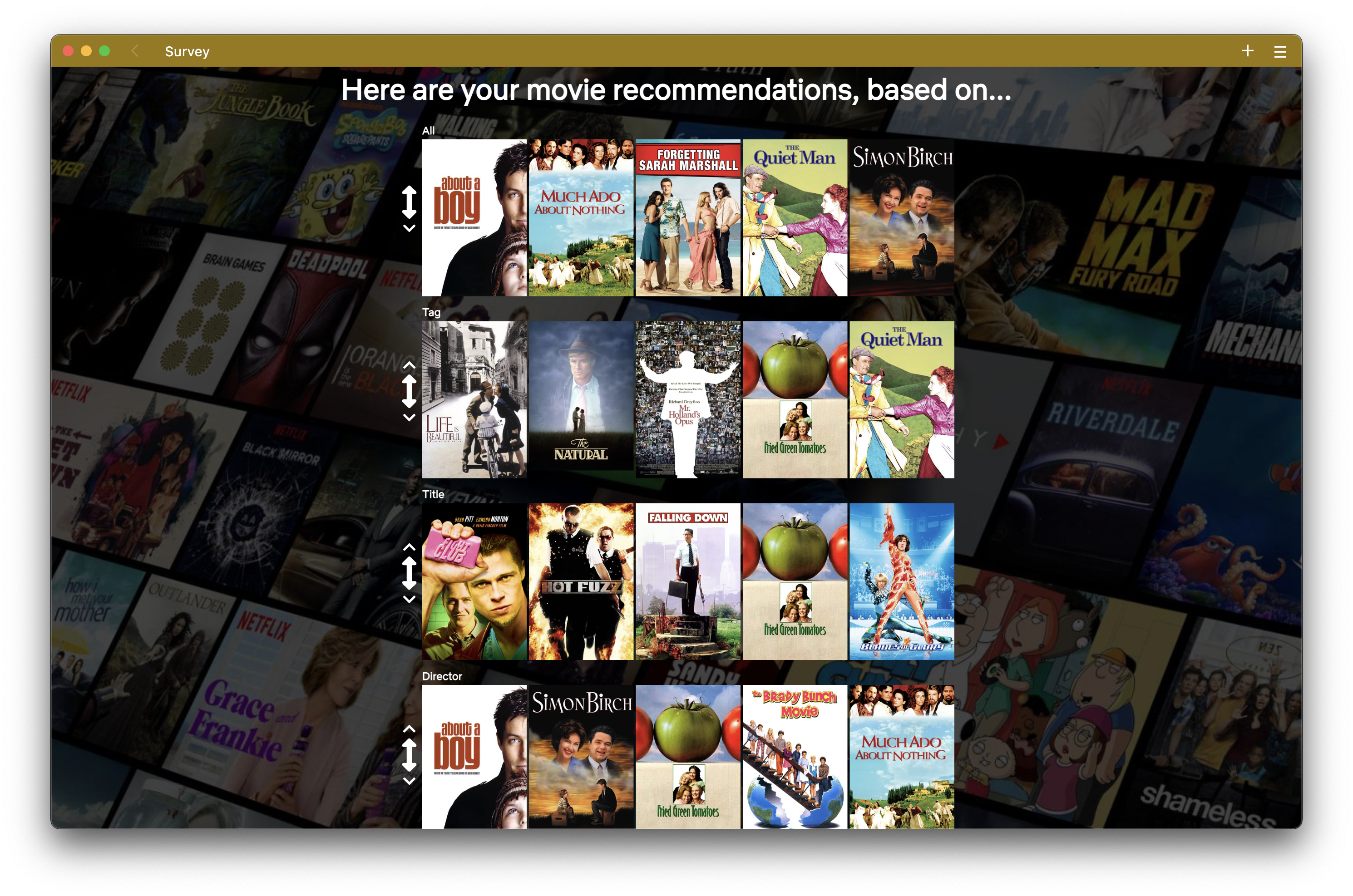
Not Mobile Friendly
Controlling Multi-list Recommendations
multilist.demo.mediafutures.noIn recommender systems, the concept of control is associated with ways users can manipulate the system through interactions or by defining parameters in order to be provided more personal and better recommendations. Other studies in the movie domain have found that users may have a divergent perception of similarity regarding which features are important to them when looking for similar movies. This thesis sets out to investigate if these divergent opinions on similarity can be leveraged by controllability in the multi-lists presentation of recommendations. This thesis shows that user control did not appear to be evaluated more positively than a non-control recommender system for the average participant. This thesis found that multi lists presentation of recommendations without control were generally evaluated better than with control by performing a quantitative conditional user evaluation of the recommender system. When looking at participants’ demographic properties, it may be that some subgroups consisting of users with a higher level of domain knowledge or similar system experience may favor control. Furthermore, no significant variances between the three list sort methods that the system uses to enforce the users’ control were discovered. As controllability in recommender systems have not been extensively evaluated in the research corpus, this thesis hopes to be a starting point that can inspire future studies to attempt other novel approaches in implementing and evaluating controllability in the multi-lists presentation of recommendations to achieve more positive results. Author: Johnny Bjånesøy.
Deprecated demos

TweetSearcher
For users who want to find relevant contextual information, including related images and news, surrounding a specific tweet. TweetSearcher collects them for you, using an image search and a news search, all that you need to start is a link to the tweet. Authors: Ghazaal Sheikhi, Daniel Rosnes.
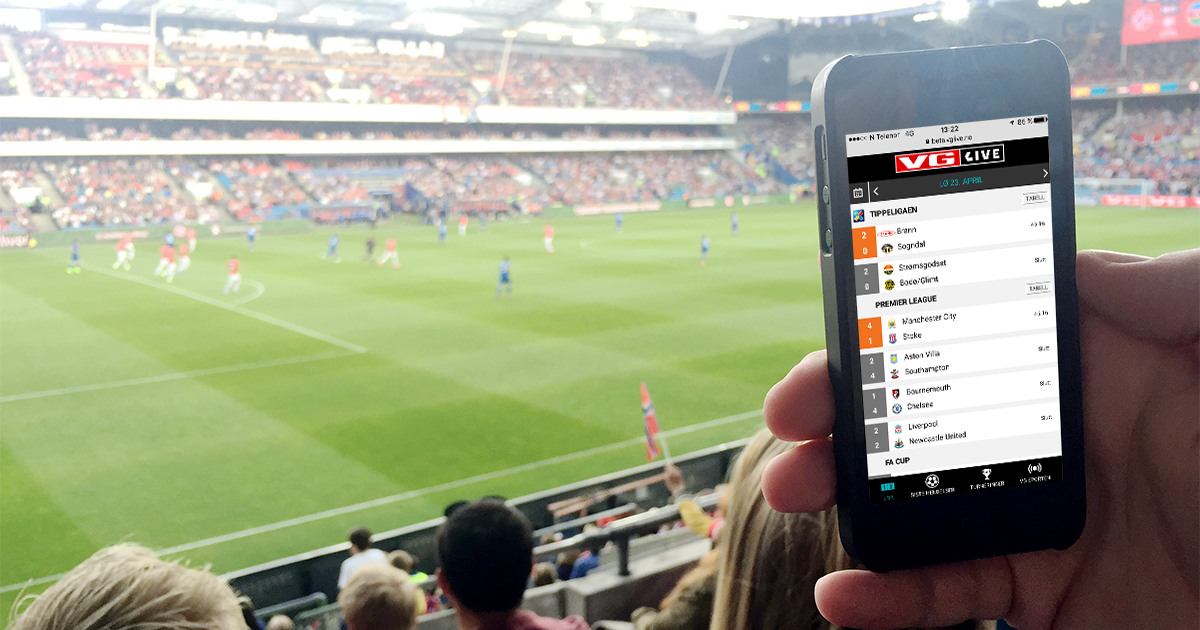
Live Tweets
Twitter can be very useful when a user is searching for what other people have shared about an ongoing event in real time but it can also prove difficult to find relevant tweets due to an overwhelming number of people posting at the same time. LiveTwets is a framework that monitors Twitter in order to find tweets that relate to an ongoing event. Developed with sports events in mind. Authors: Bjørnar Tessem, Daniel Rosnes.
Find us
Lars Hilles gate 30
5008 Bergen
Norway
Contact us
MediaFutures
Office@mediafutures.no
Responsible Editor:
Centre Director Prof. Dr. Christoph Trattner
Christoph.Trattner@uib.no
Copyright © University of Bergen 2024



























